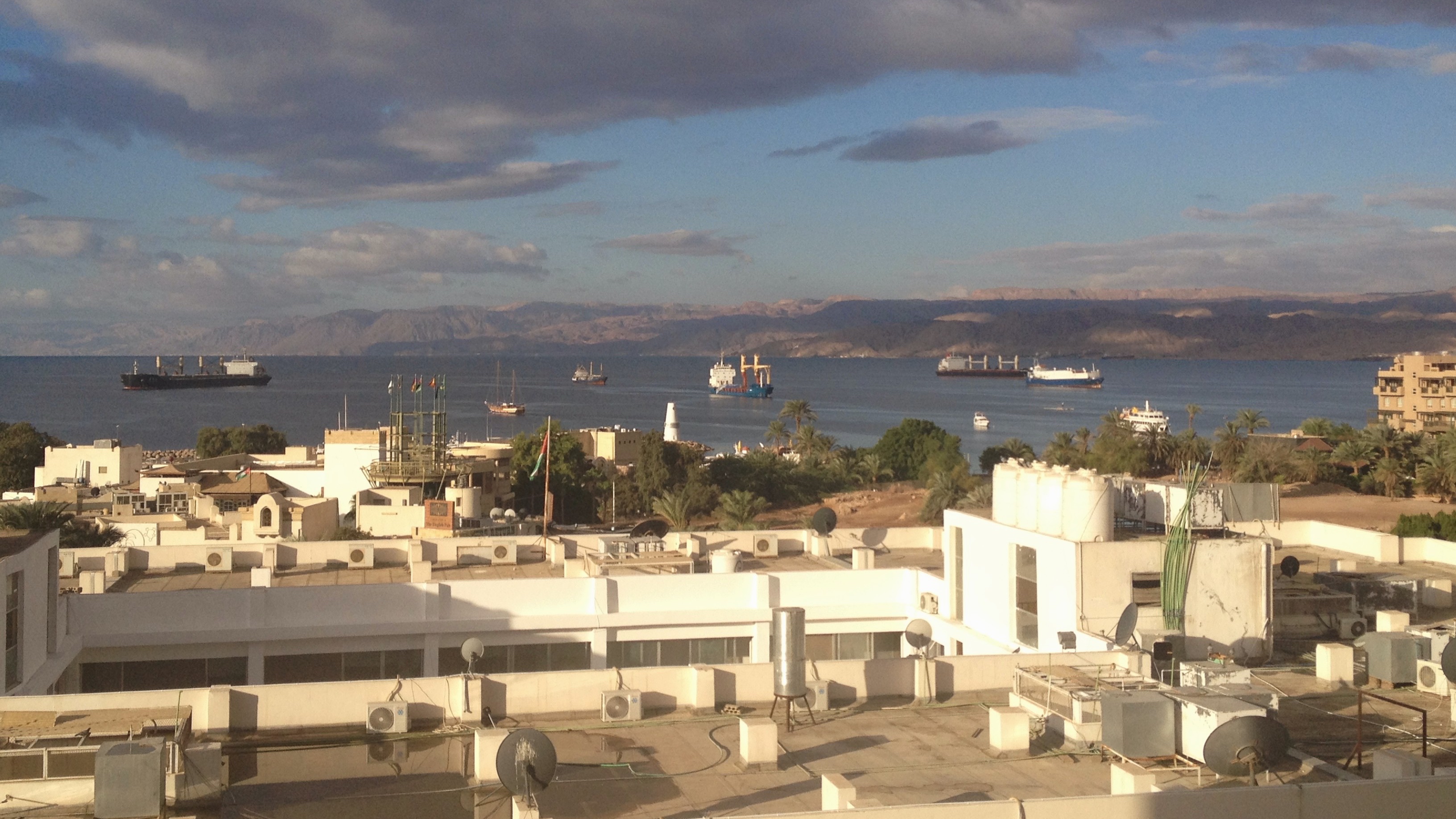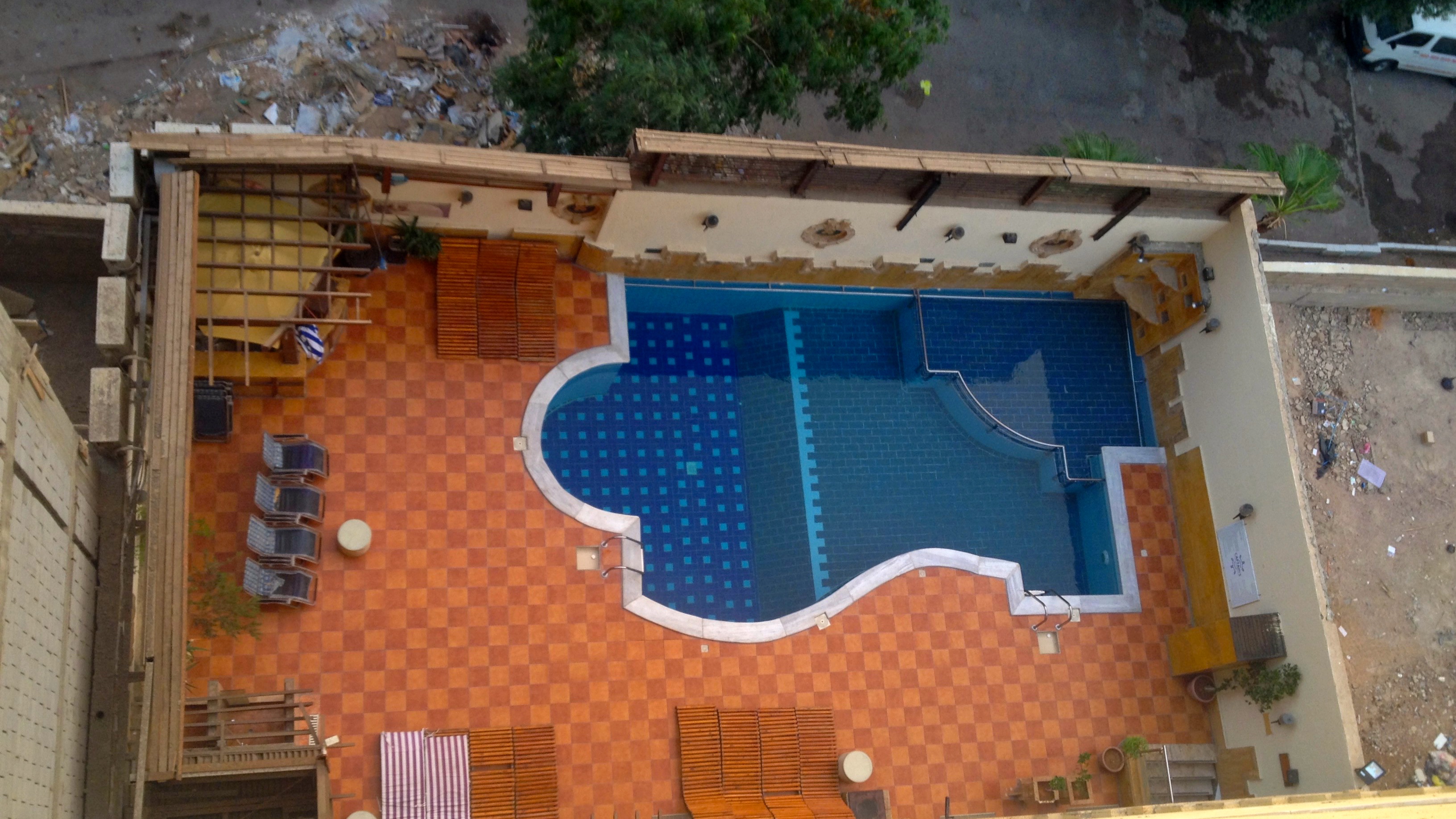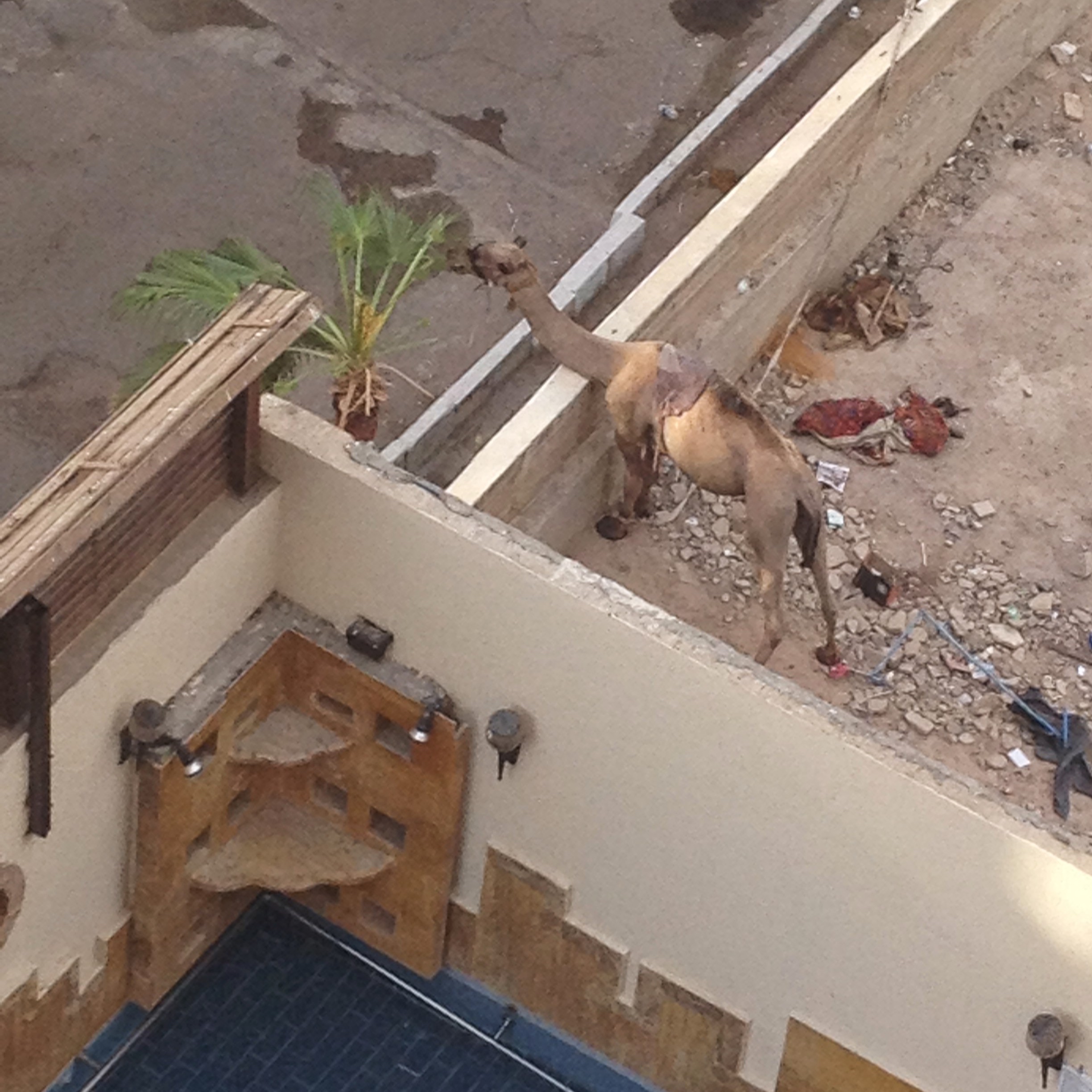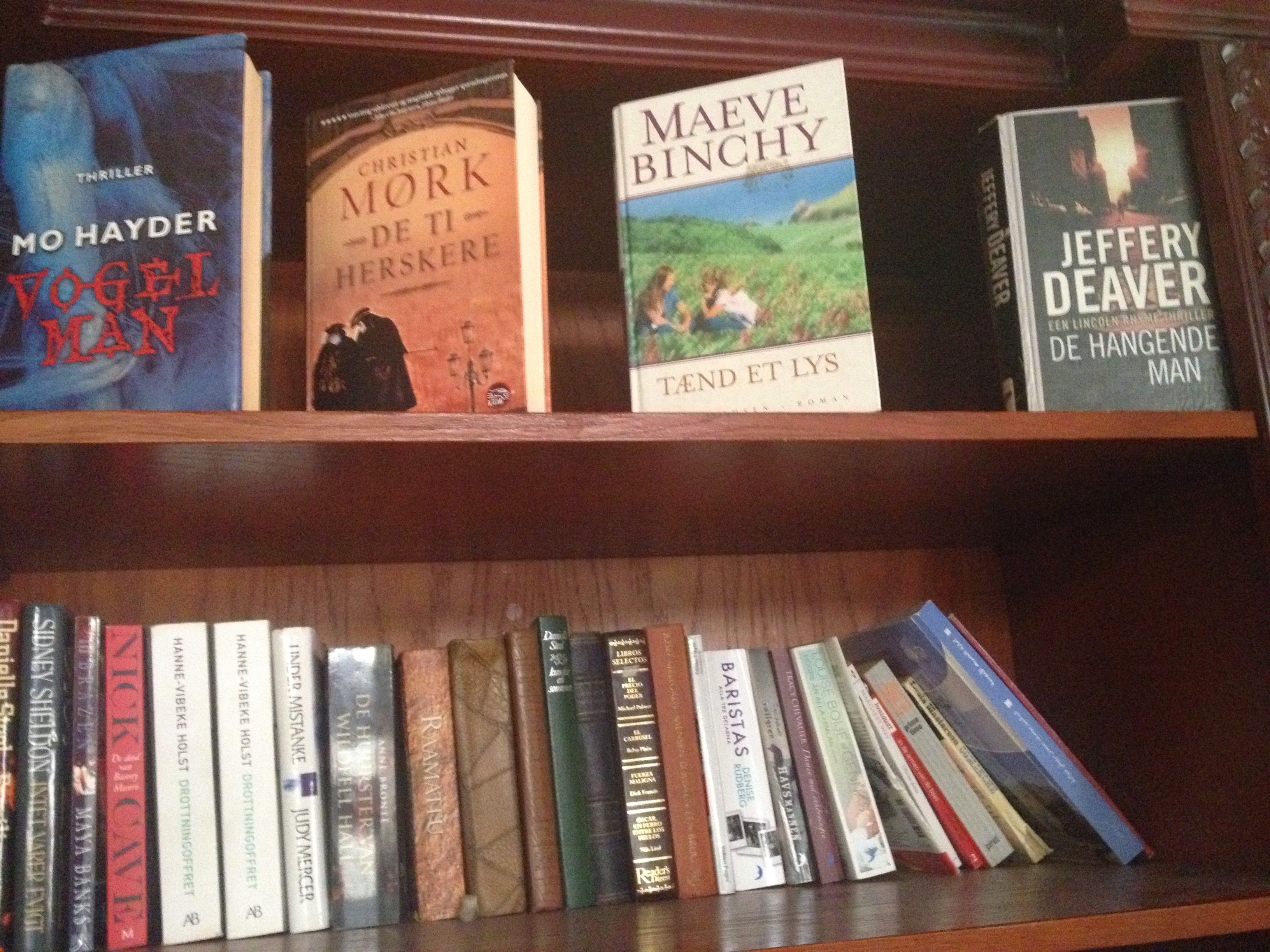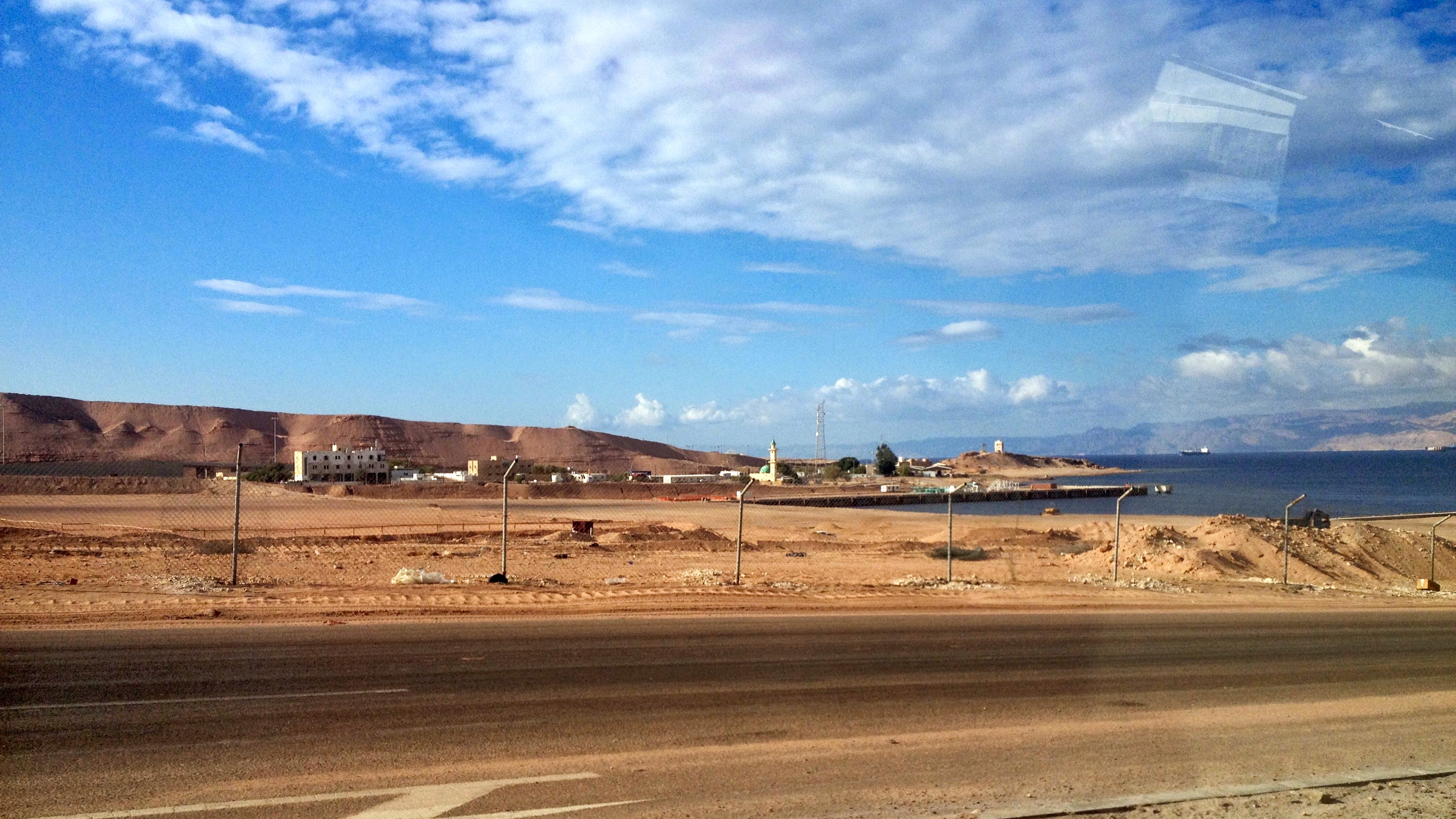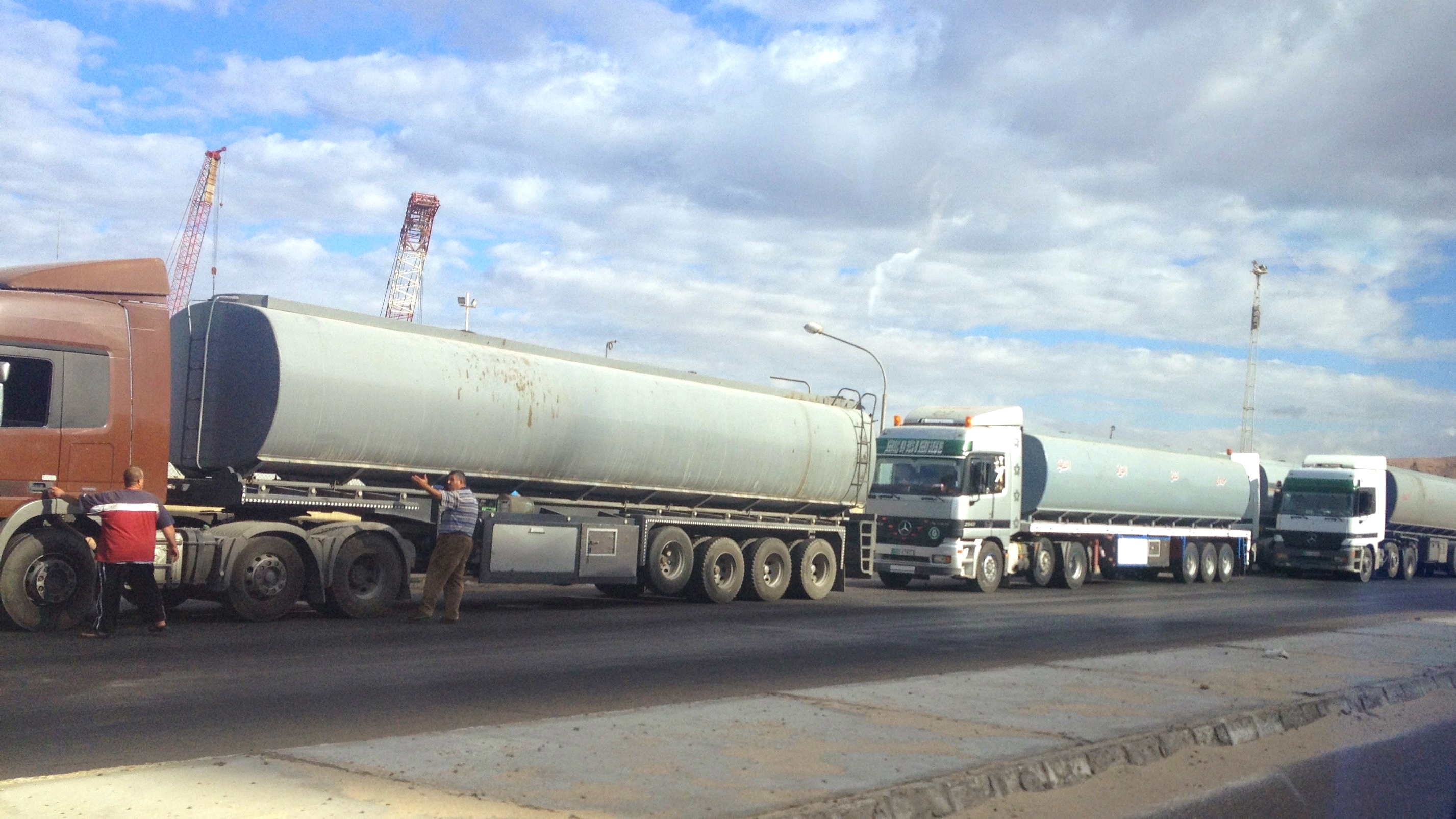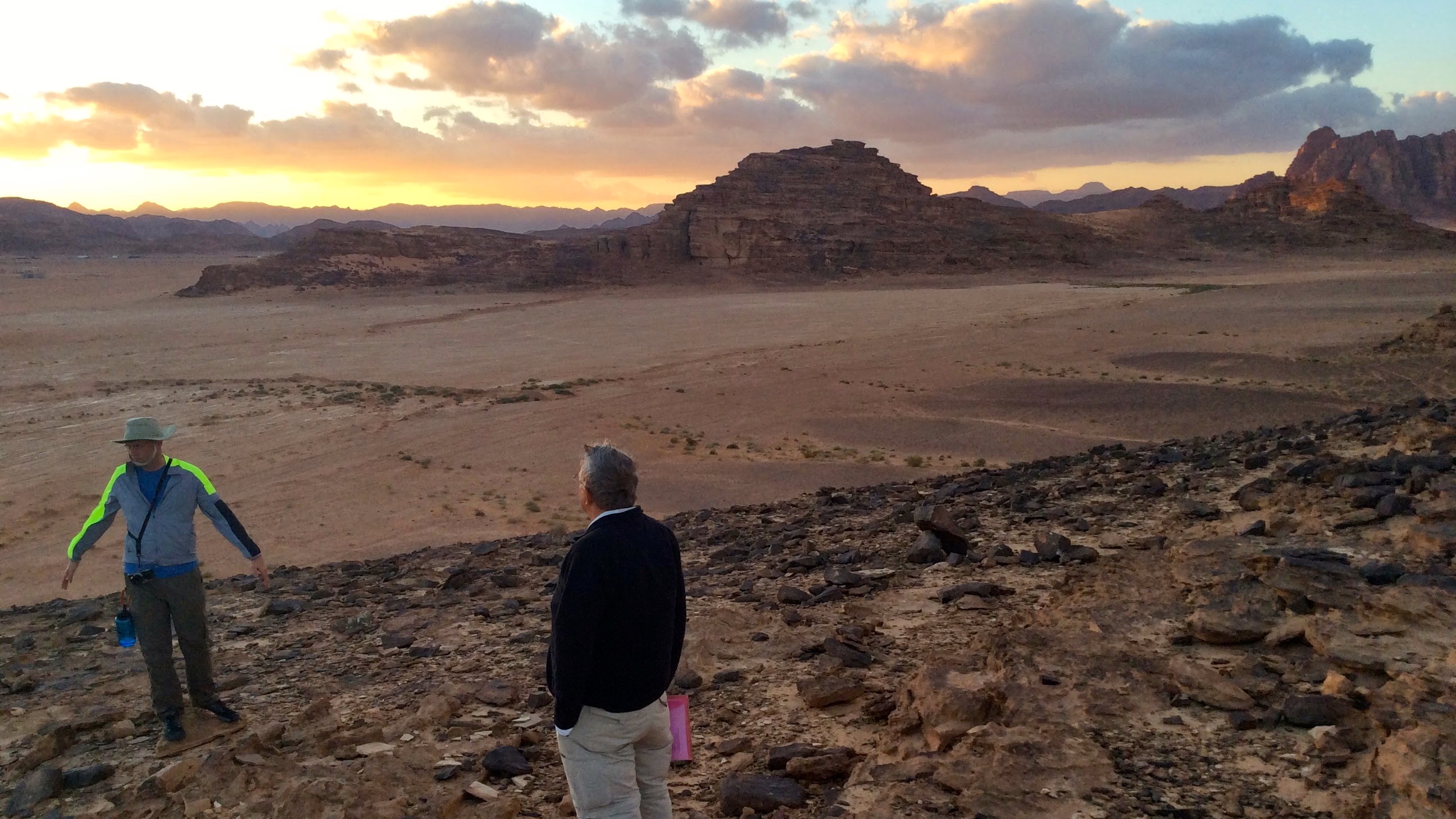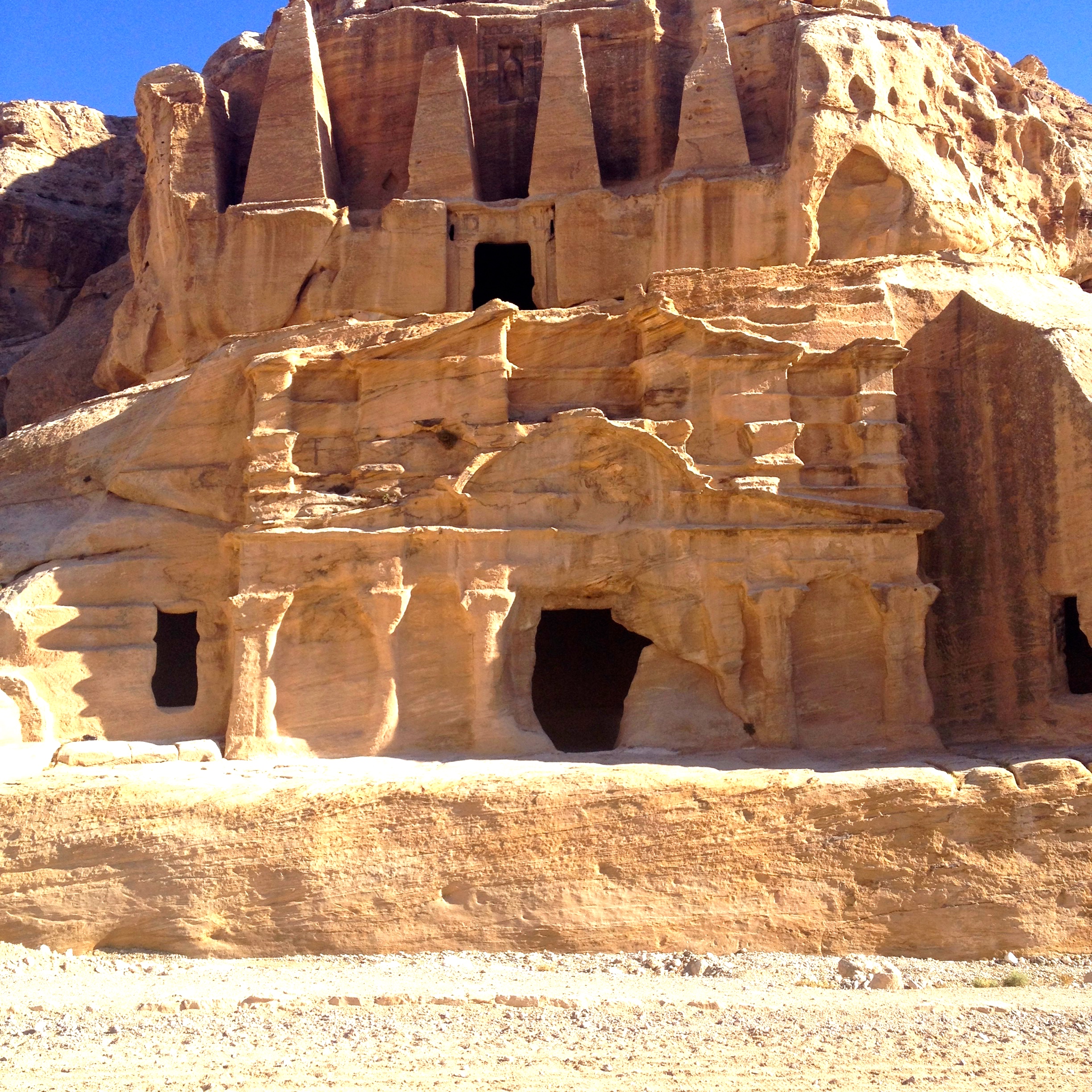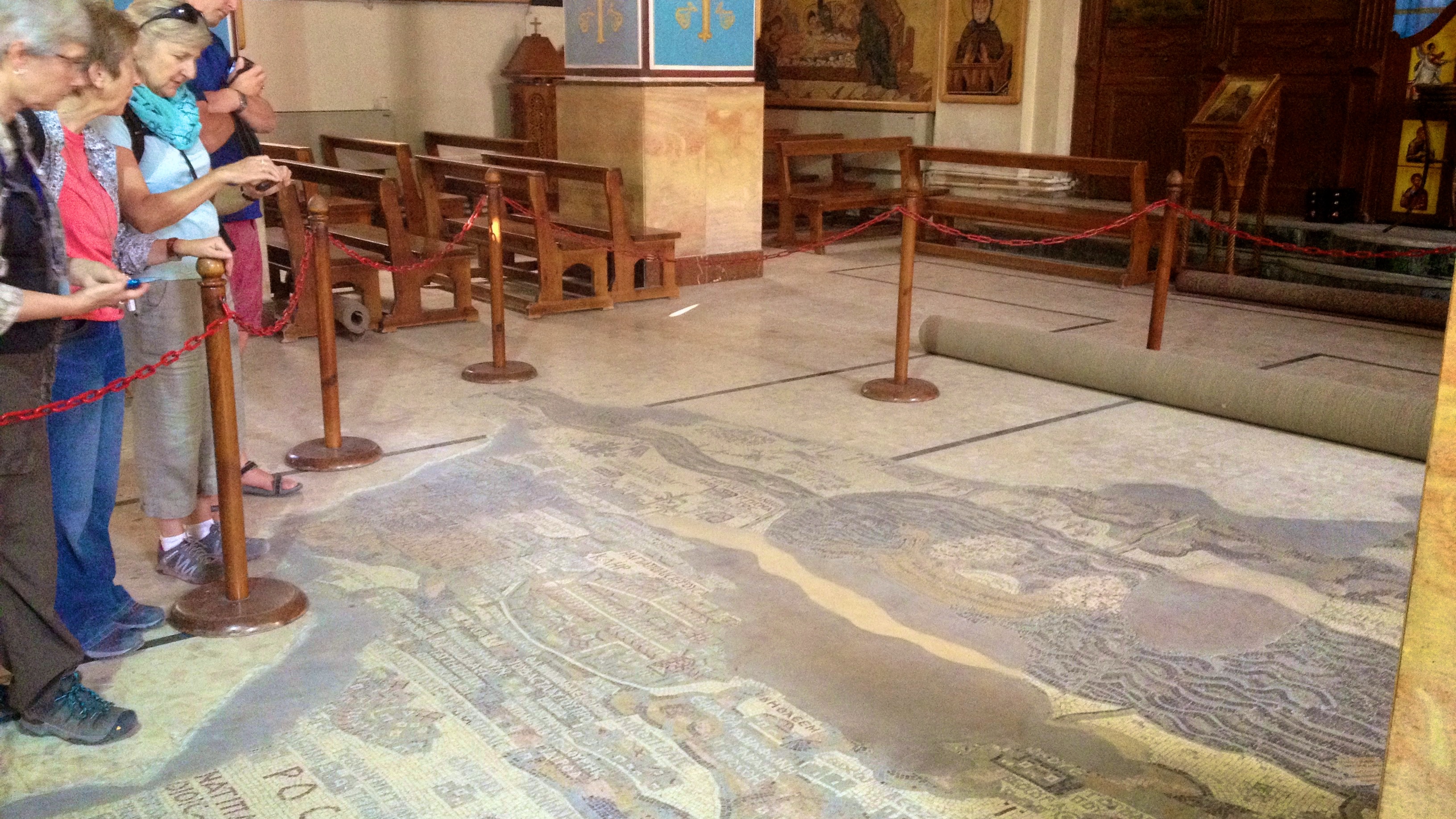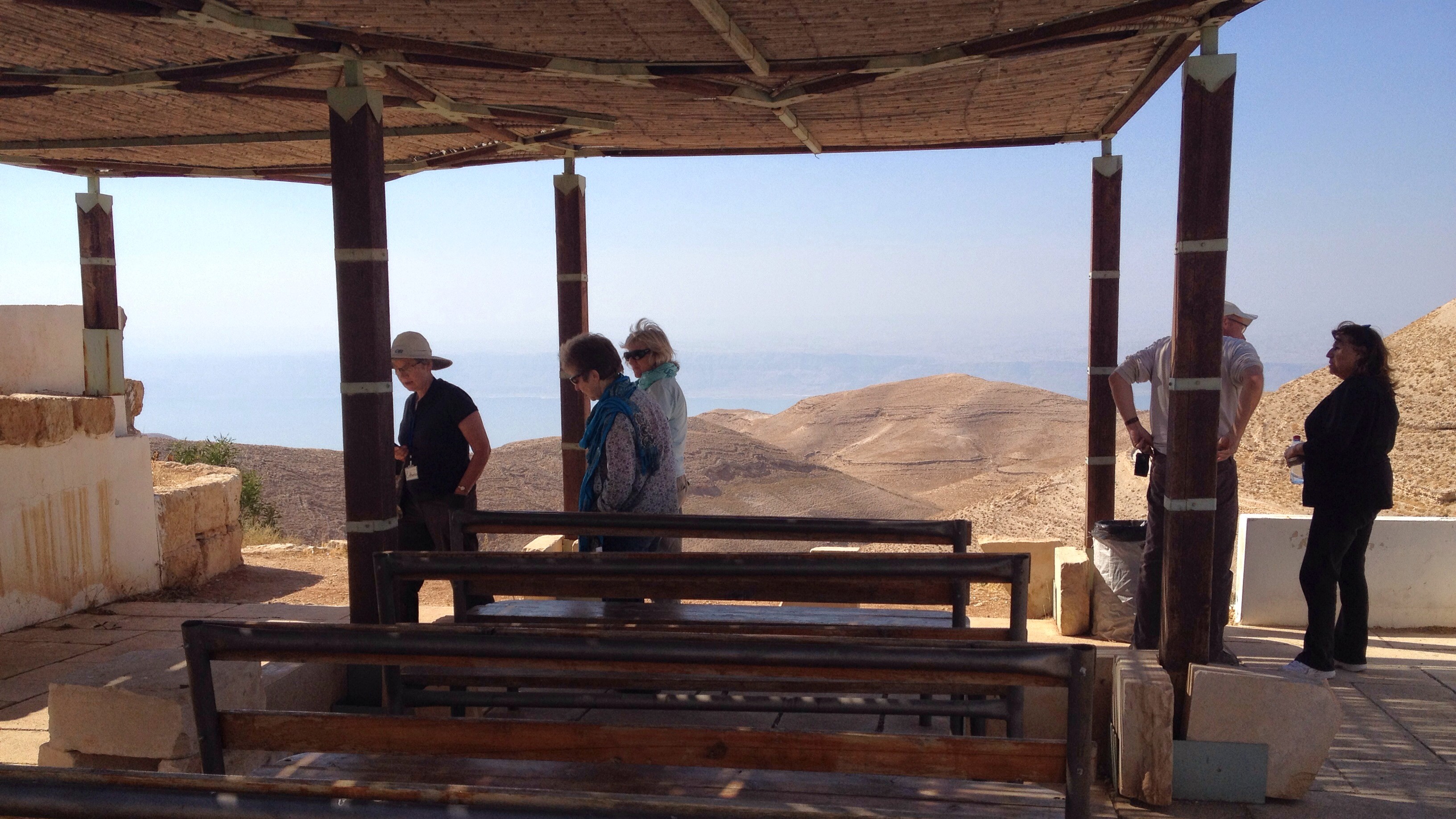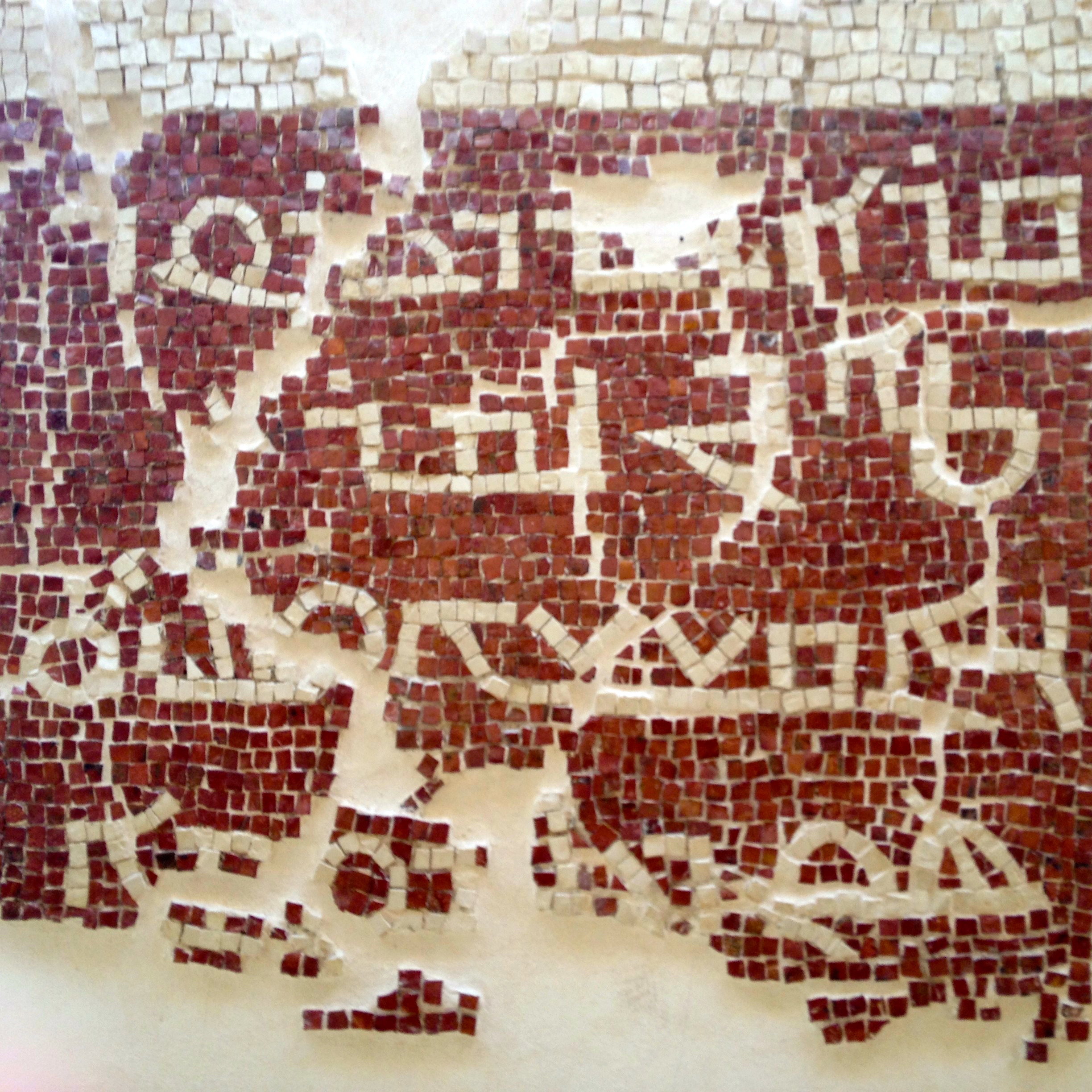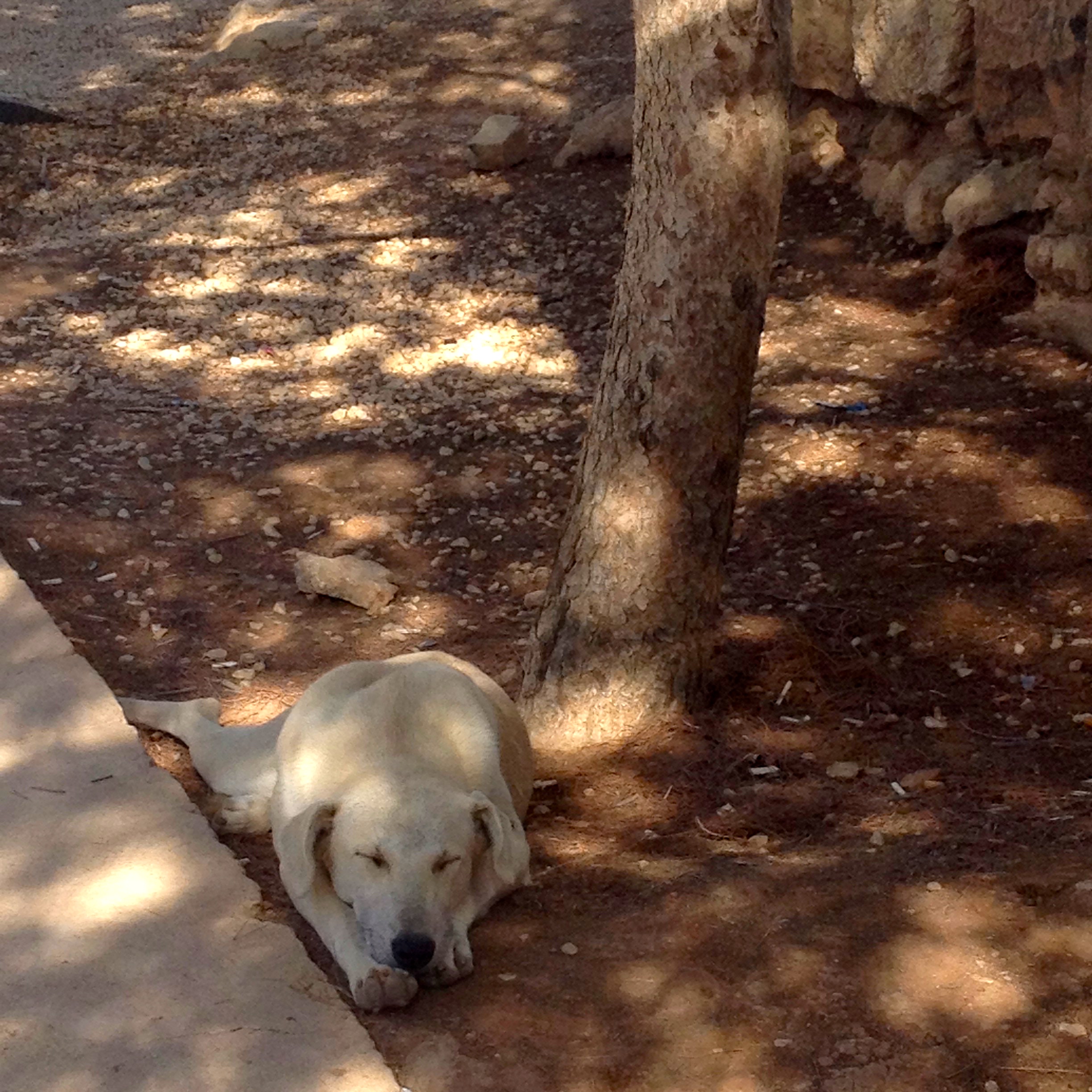The Beauty of Jordan
Jordan is a beautiful country. It's also a stable country that has a peace treaty with Israel, a smart and benevolent king (King Abdullah), and a thriving tourist industry. It's blocked in by countries that are perhaps somewhat less comfortable:
1. Syria
2. Iraq
3. Lebanon
4. Saudi Arabia
5. Israel / Palestine
However, as soon as our little group crossed the border from Israel into Jordan, down south in the city of Eilat, what we noticed was that everyone seemed to be smiling. Even the border police.
We were in Jordan for a week, and the first two nights we spent in Aqaba - a city on the Red Sea / Gulf of Aqaba. (You may remember Aqaba from the movie, "Lawrence of Arabia.") Now, it's a resort town, maybe like a small version of Miami, full of European and Arab tourists, except there are guys with camels walking the streets trying to sell you a ride.
Here's the view of the sea from our hotel room. That's Israel and Egypt in the distance. There are also a few jet skis in the picture, toward the right.
Note the cargo ships - Jordan is undergoing a huge construction project to move the industrial port further south so the waters around the city itself can be exclusively for swimming, pleasure boating, and snorkeling.
Our lovely hotel lobby and pool.
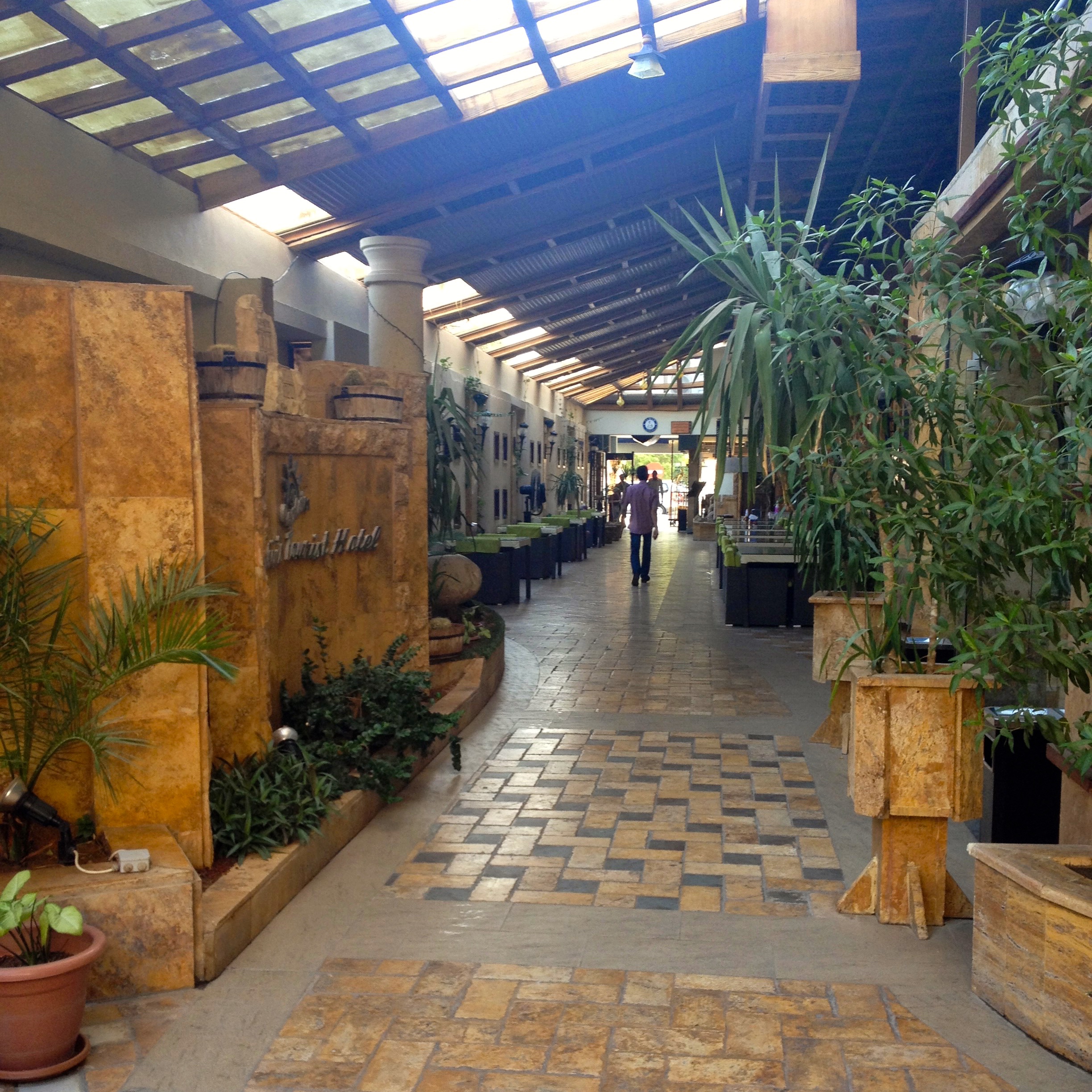
Of course, note the garbage and empty lot surrounding. I imagine this is common in poorer countries with tourist industries. That street was full of stray cats and the empty lot actually was home to two of those tourist camels I mentioned earlier. One morning, perhaps one hadn't gotten his breakfast yet, so he started eating a palm tree.
Just like the Gideons in an American hotel, there were holy texts and tracts left out for guests to find.
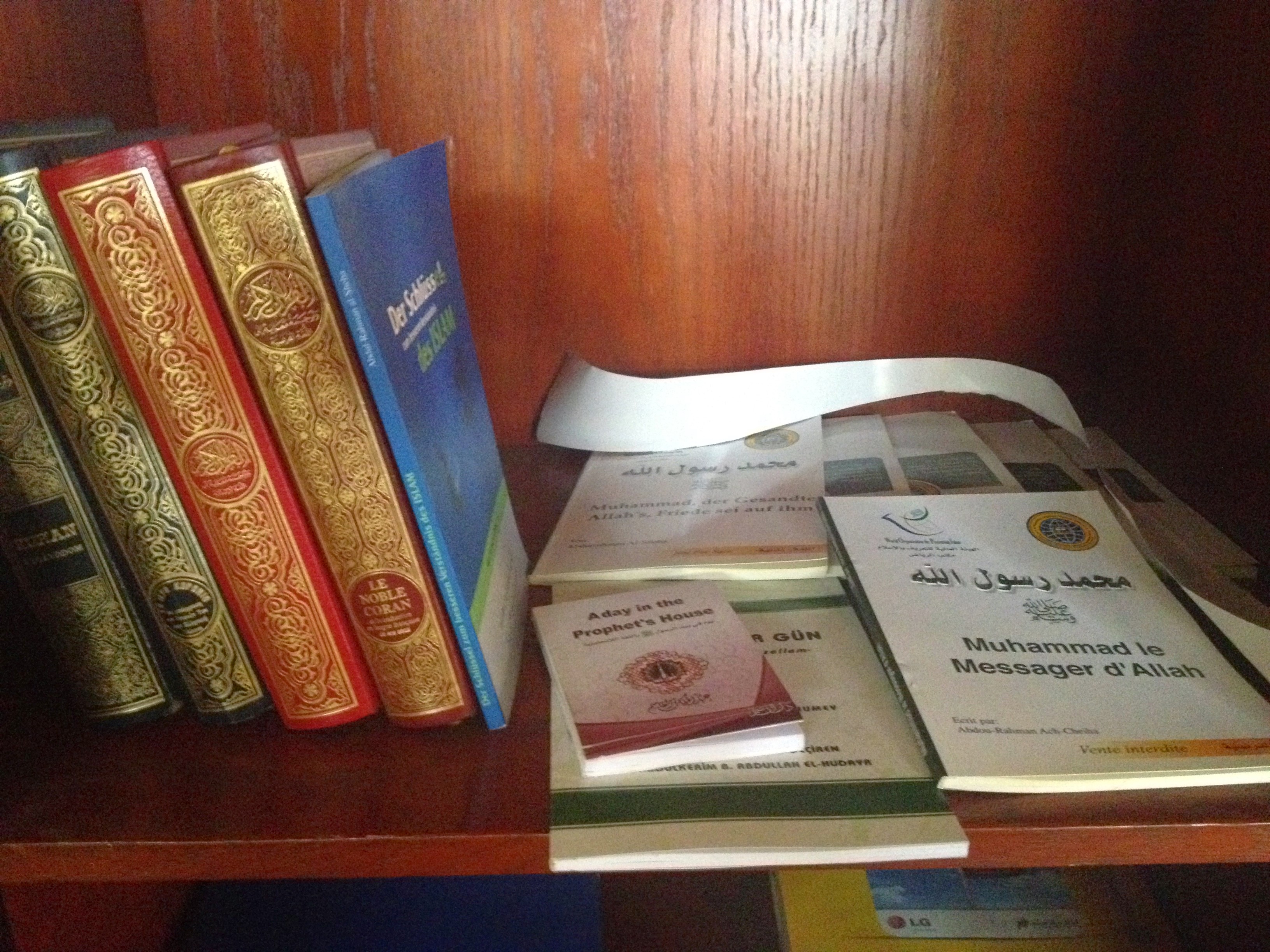
Adam and most of our group went snorkeling in Aqaba, but I was stuck in our hotel room, rehydrating after too much desert exposure!
On our way out of the city, we stopped near the Saudi Arabia border crossing to wave hello.
And marveled at dozens and dozens of oil trucks from Iraq, in line along the highway, waiting to drop off their cargo at the port of Aqaba. It was a bit dizzying to think of what dangers they may have faced, and yet, like anyone, I'm sure these drivers are just trying to make a living and support their families. If you squint, you can see Arabic letters in red on the tankers. I think they say "Iraq," but I can't recall for sure.
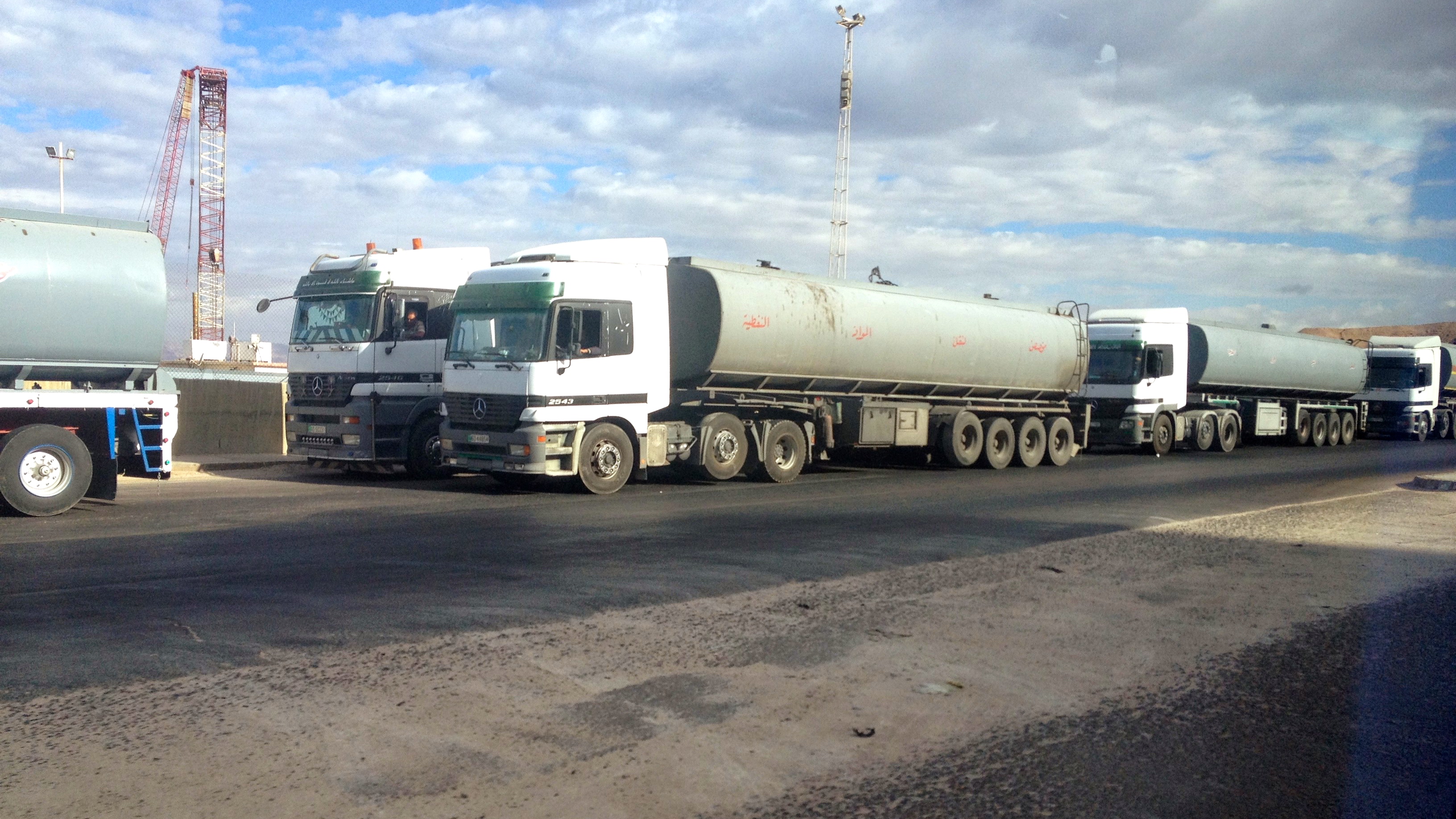
From Aqaba, we drove up, up, up to Wadi Rum, at 5200 feet above sea level. "Lawrence of Arabia" was filmed here (to represent Saudi Arabia).
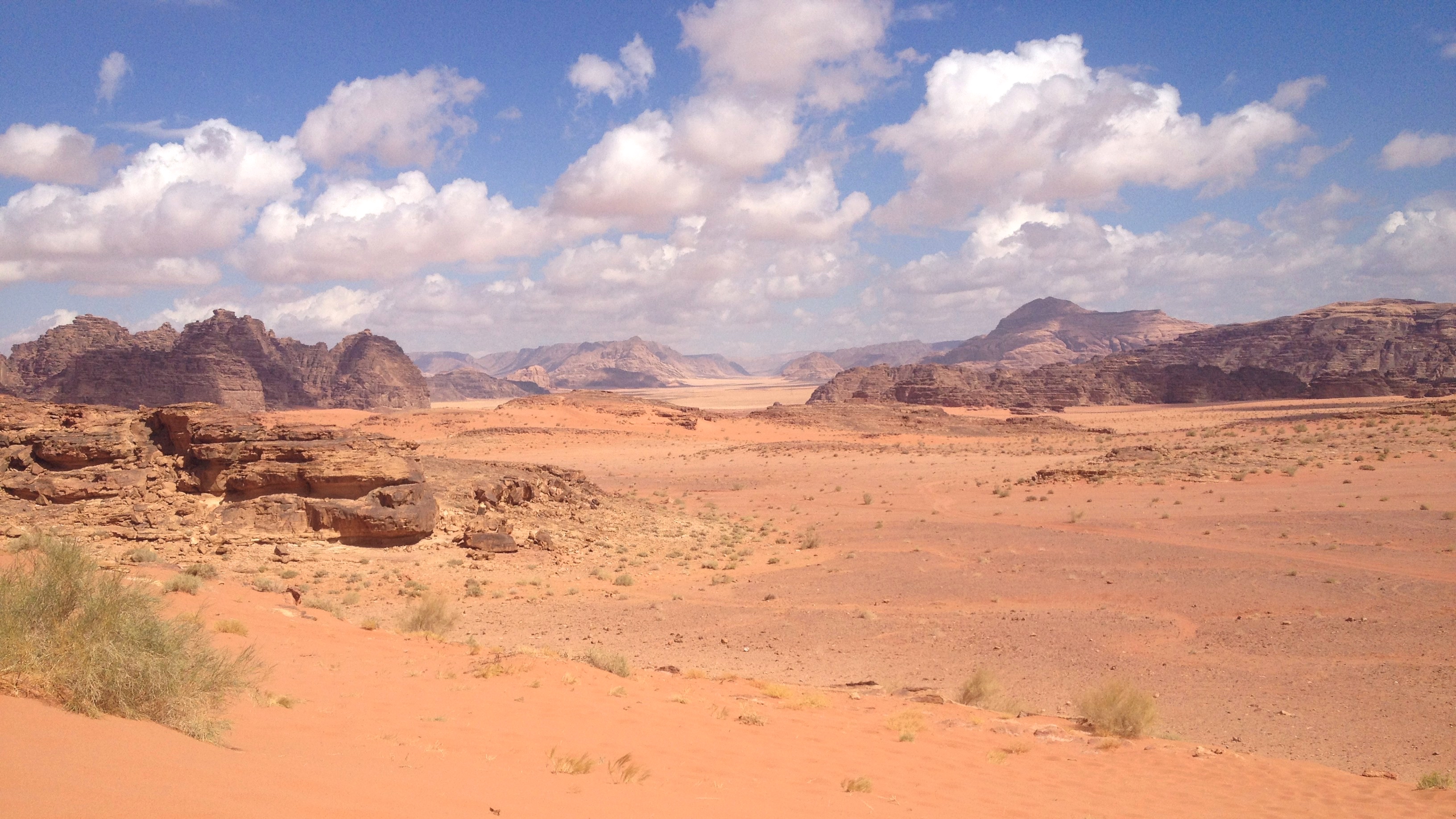
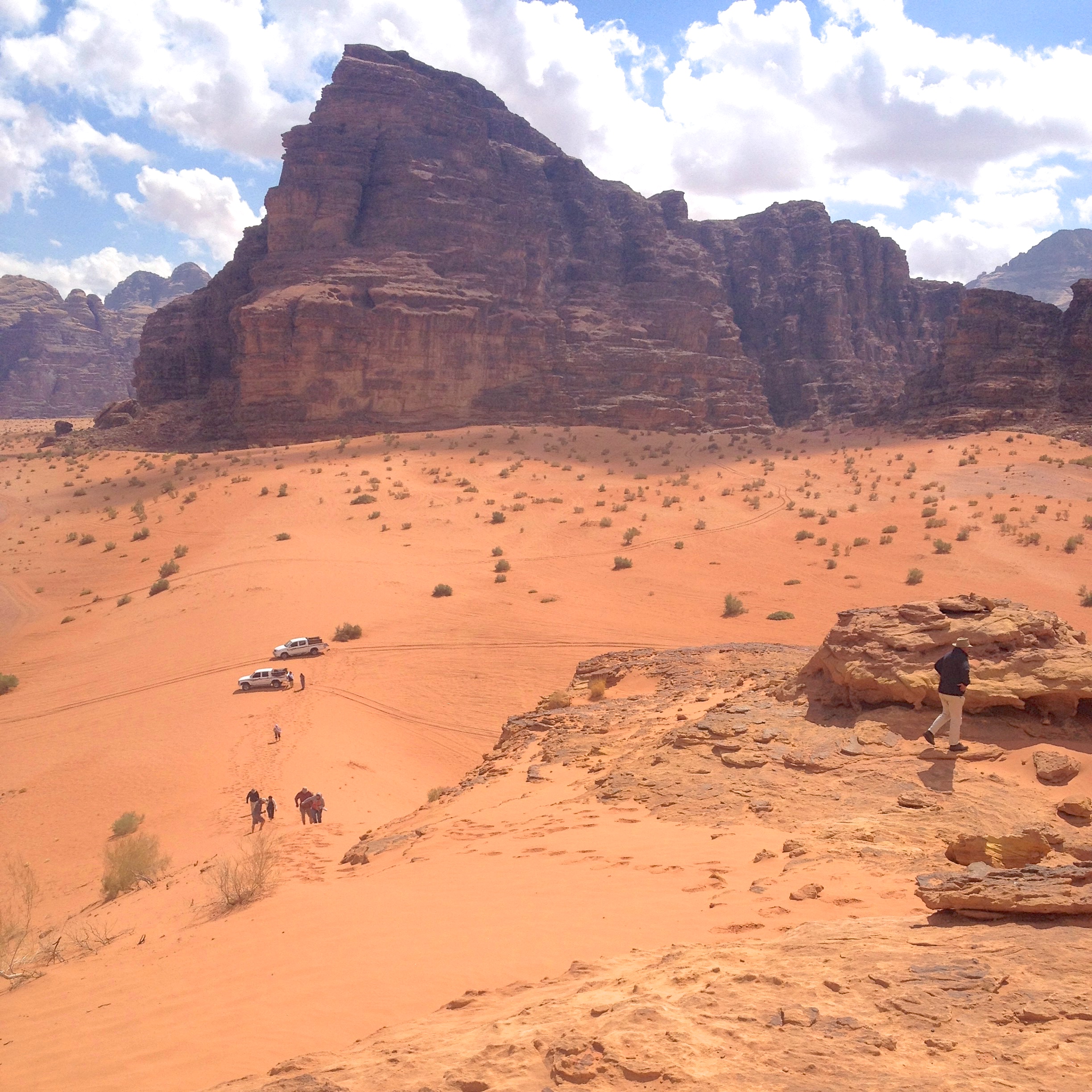
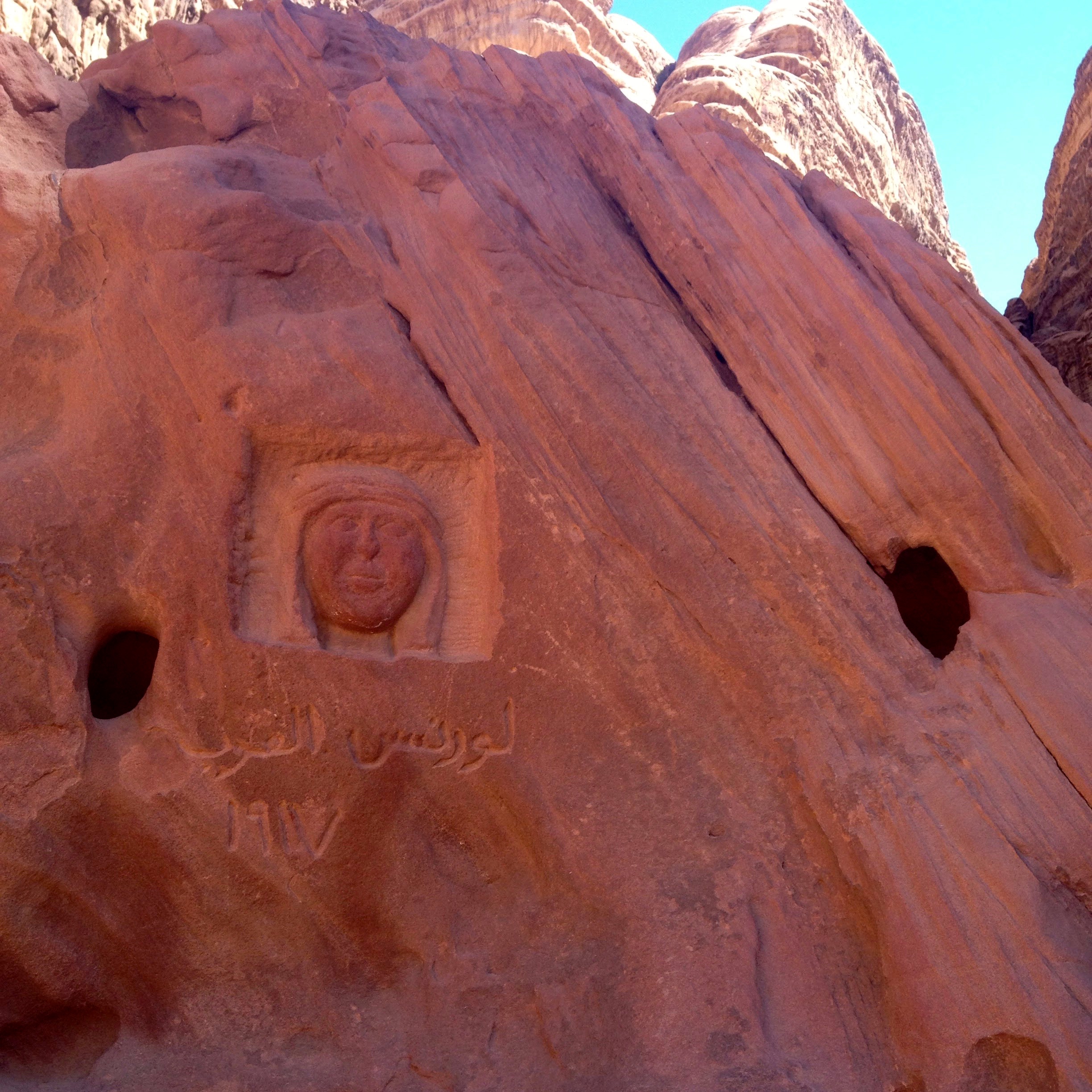
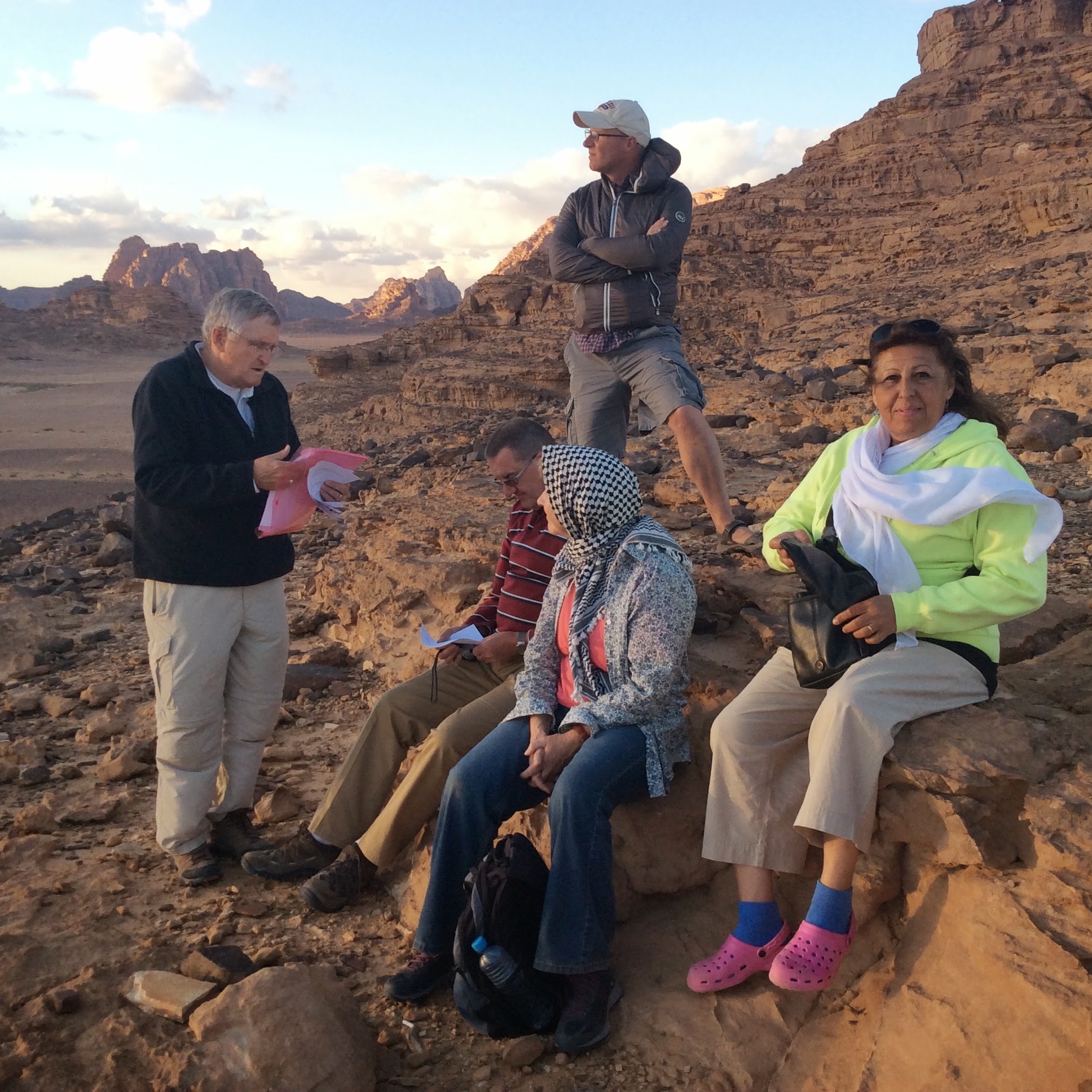
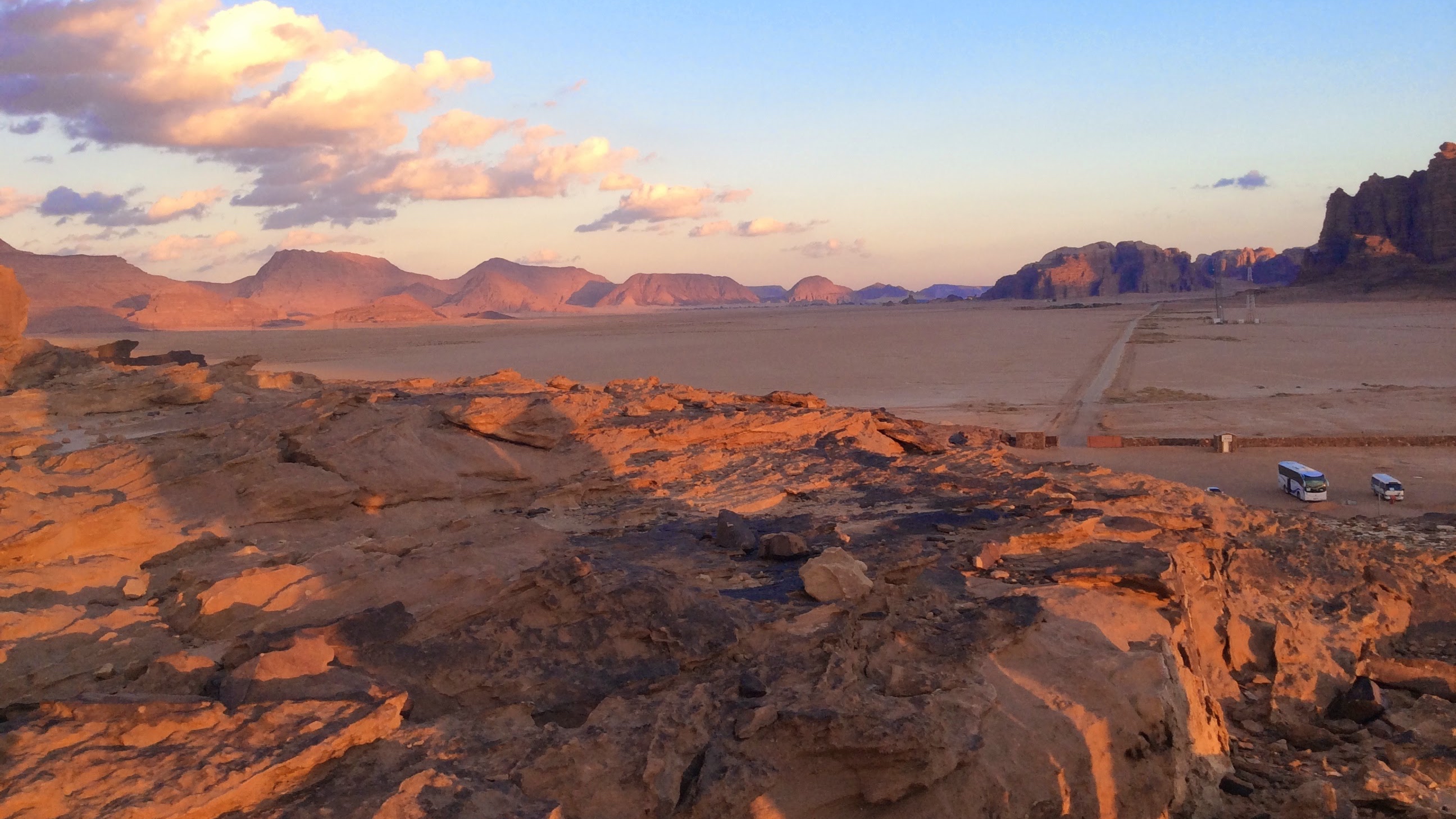
The tent where we slept that night, carpet spread right on the sand!
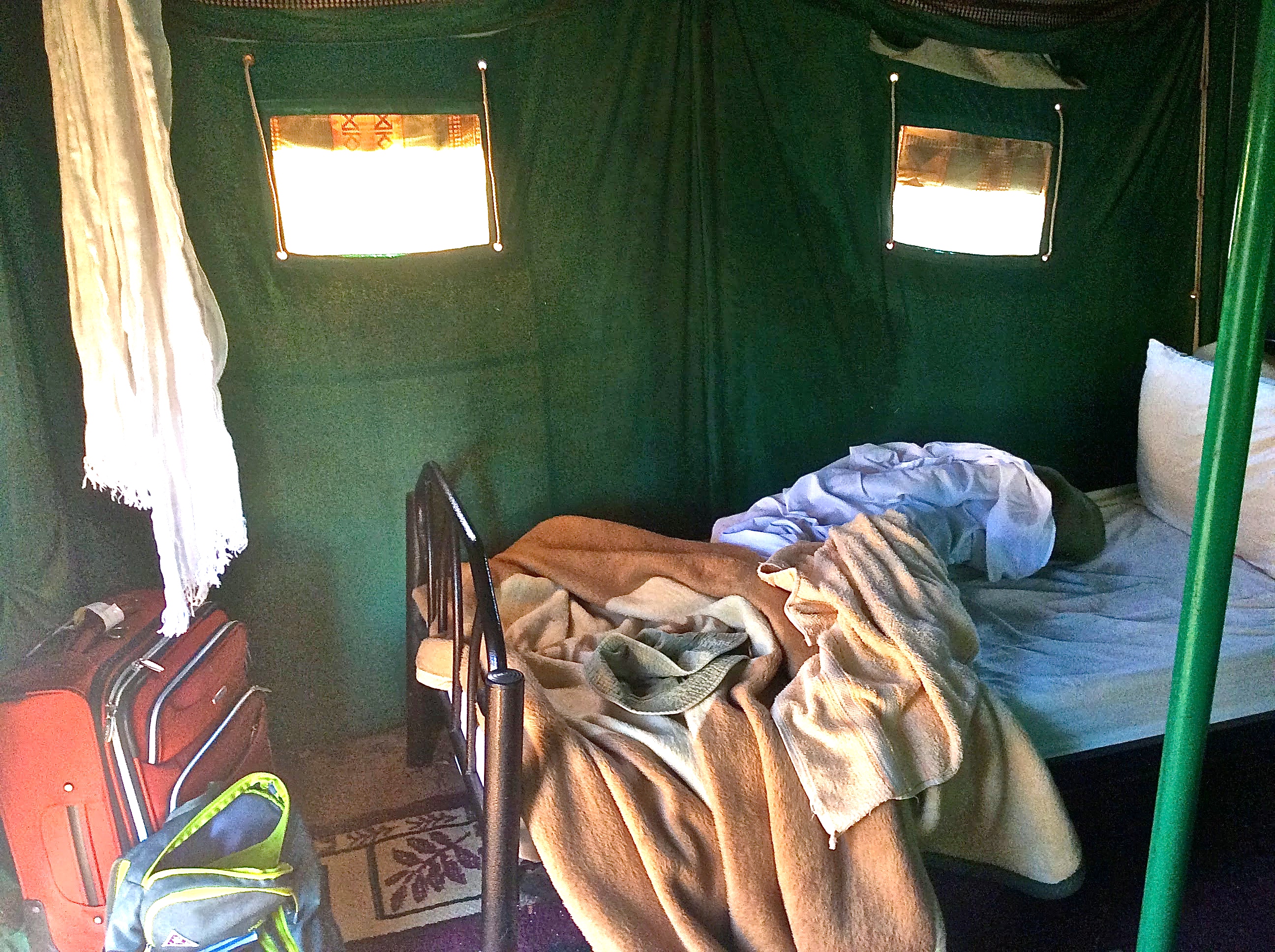
Then we drove up to Petra, Jordan's most famous and popular tourist site. Petra was originally a sort of city for the dead, with hundreds and hundreds of tombs carved into the rock of a deep, almost hidden valley. Later, the Romans made it an actual city and people lived in what were tombs, or chipped them apart to built houses nearby. Now, it's just empty - but huge. And haunting.
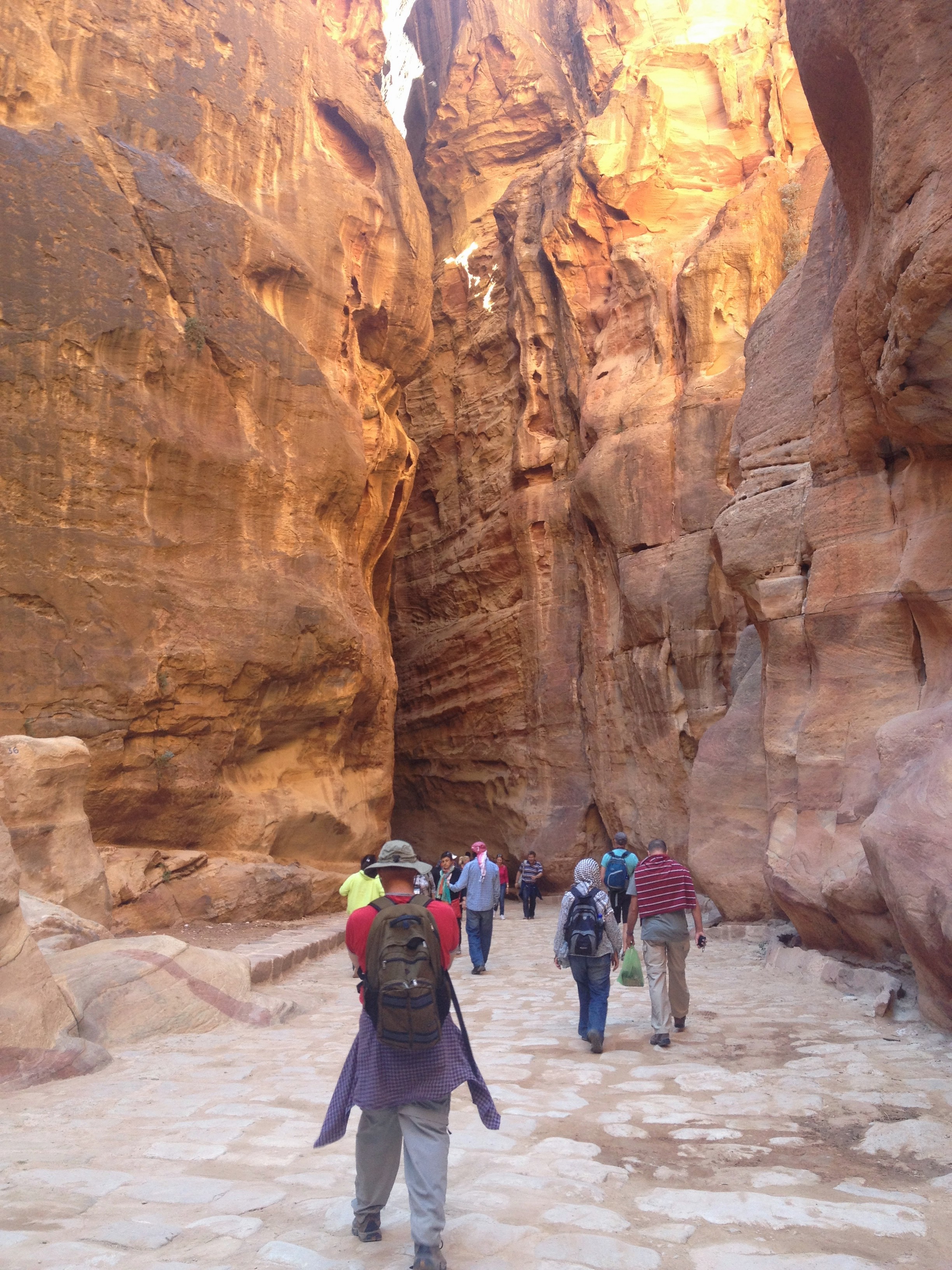
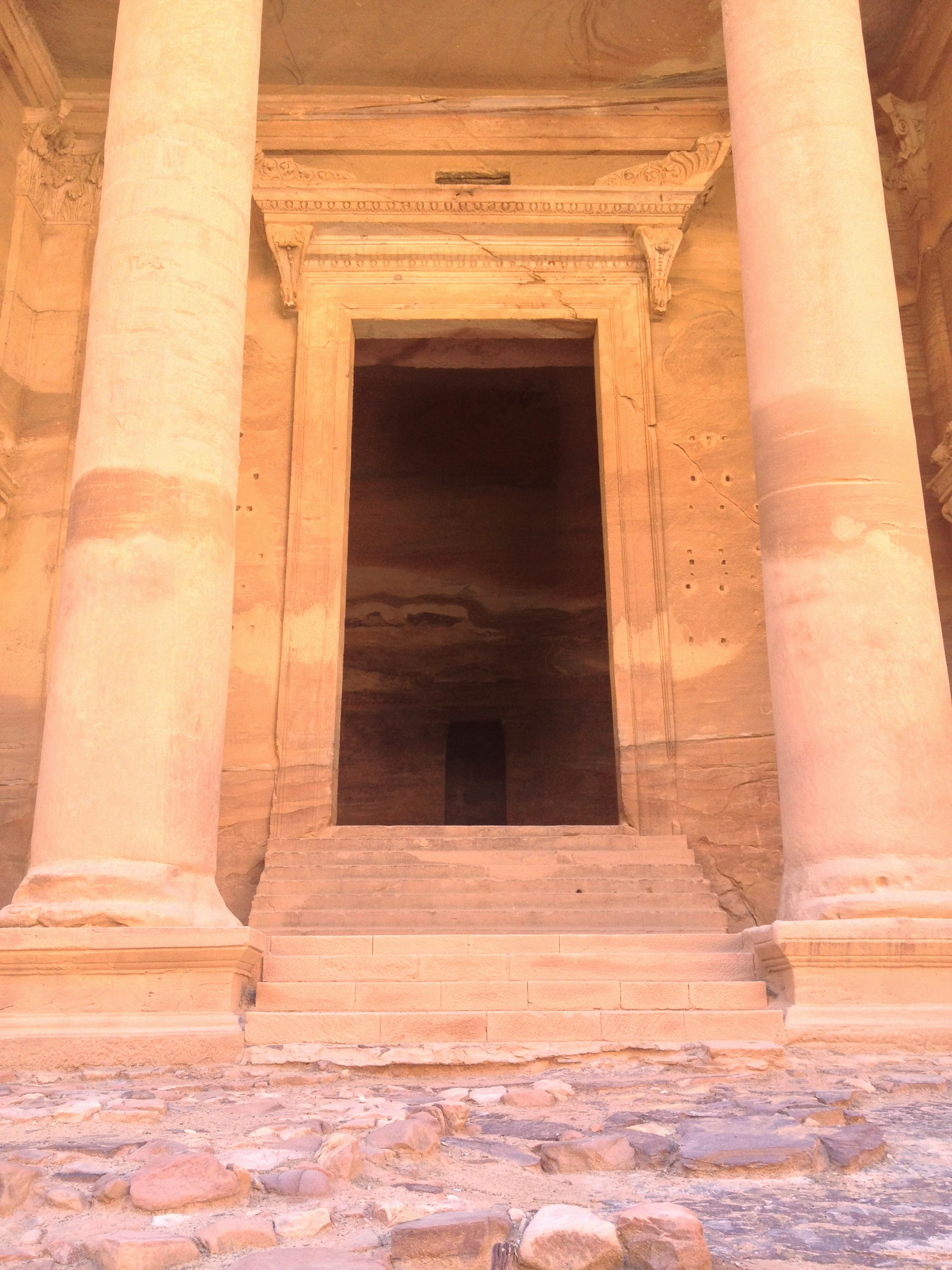
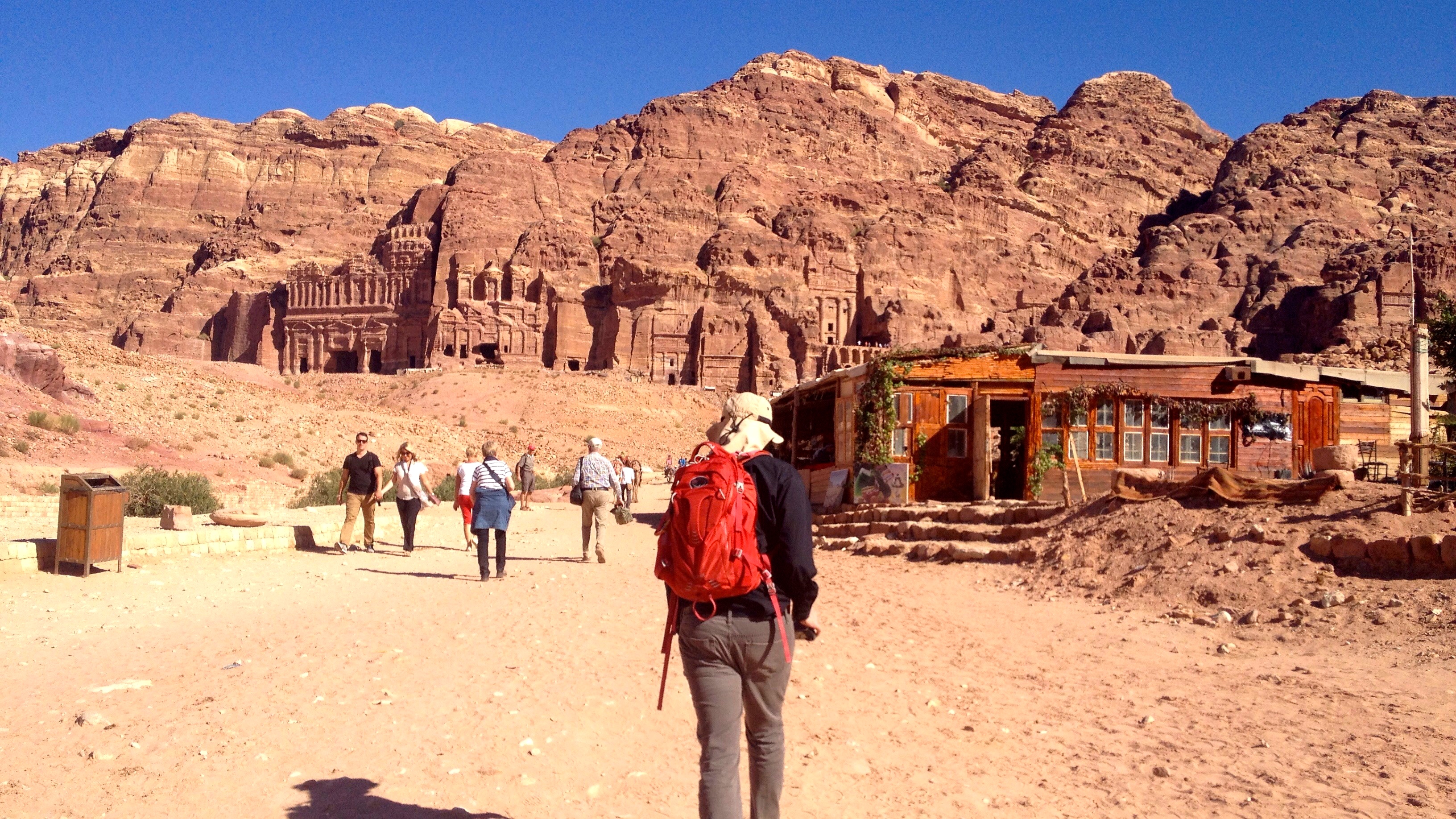
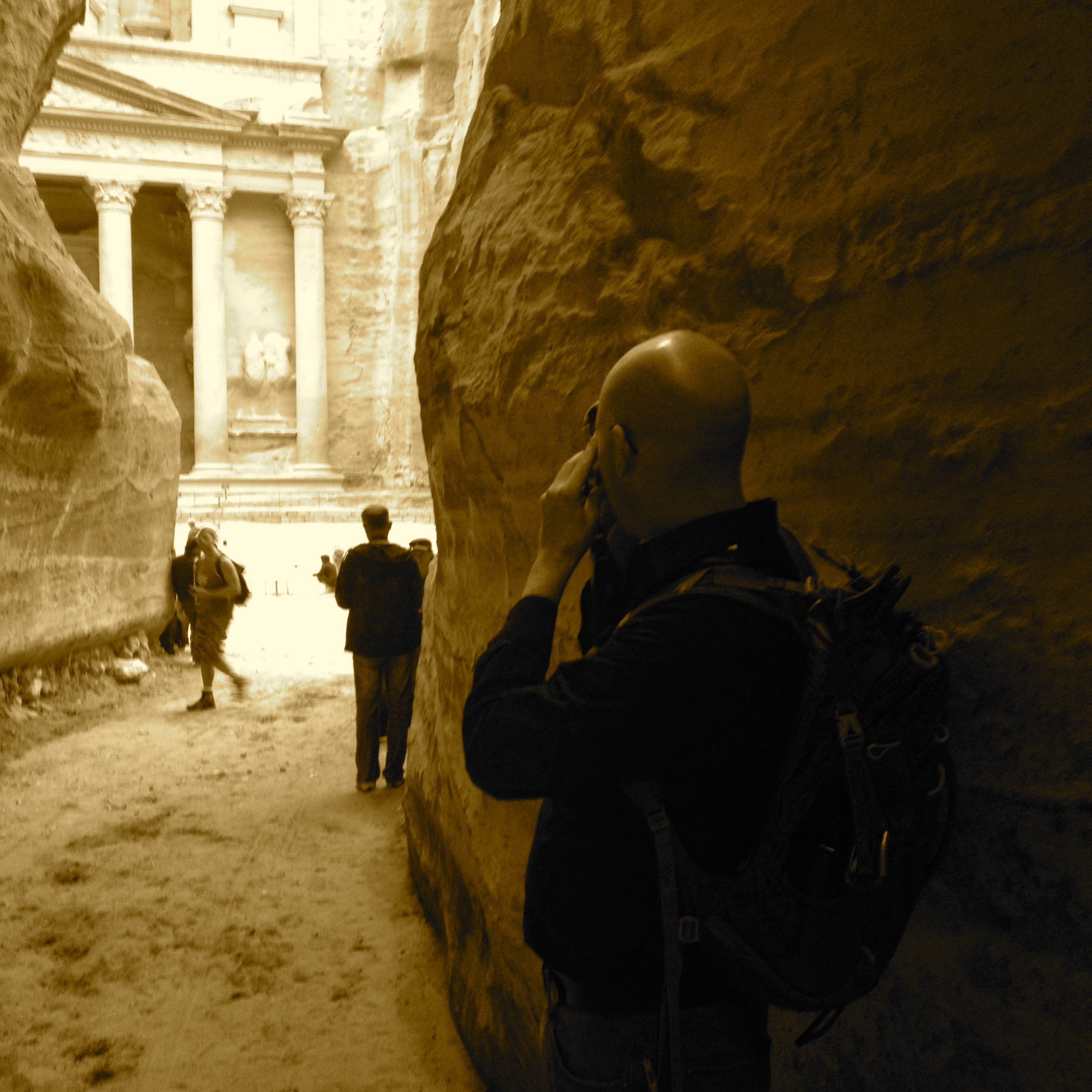
We saw the most beautiful mosaic floors in Jordan. The first were part of what was once a huge church and monastic complex, now called Umm ar-Rasas. It used to be that a church could only have a Eucharist once a day, and so many churches and chapels were needed to serve a large population. By the time this area became Muslim, the town here had been abandoned, so the churches weren't converted into mosques and so we have these remains.
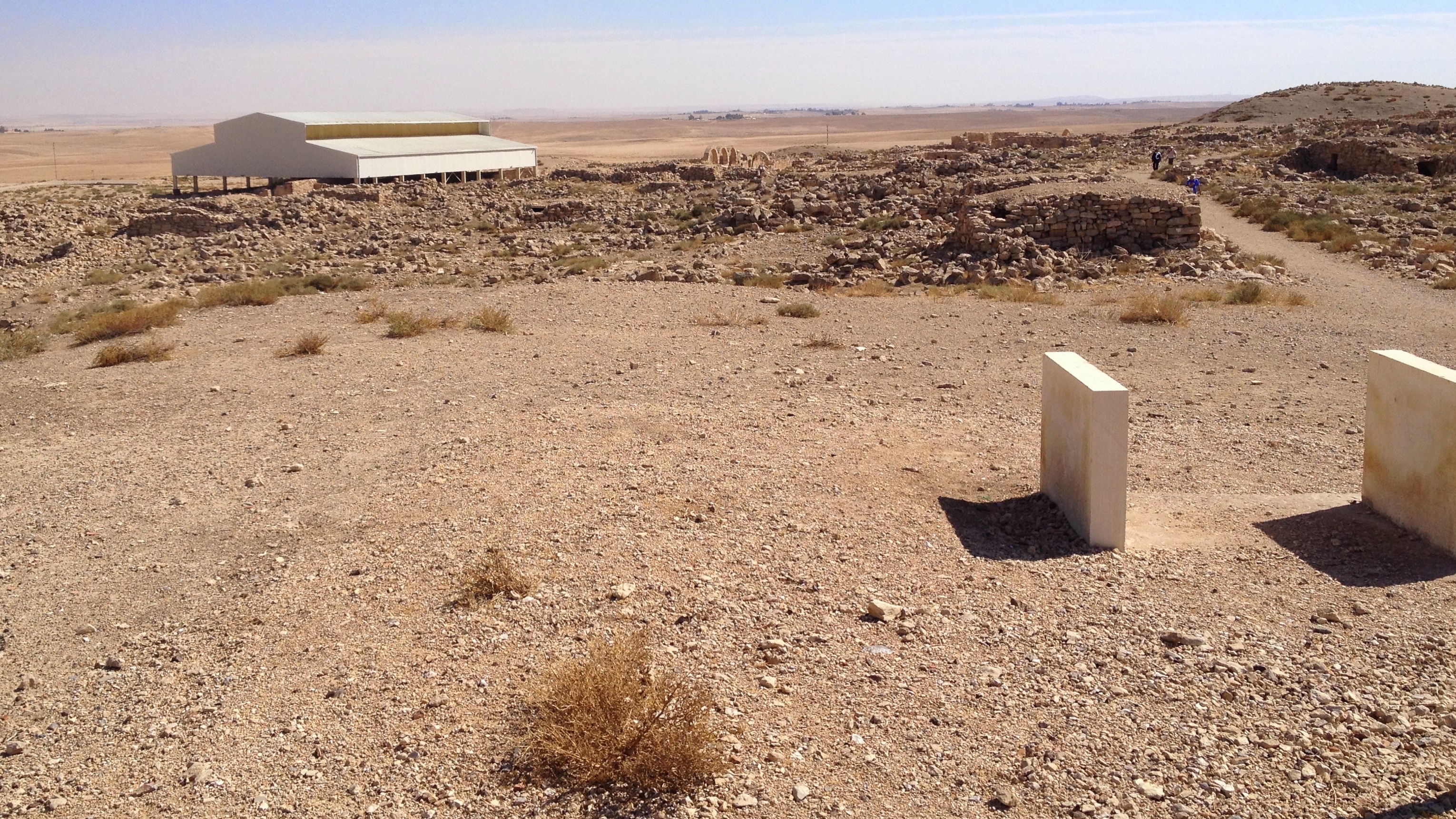
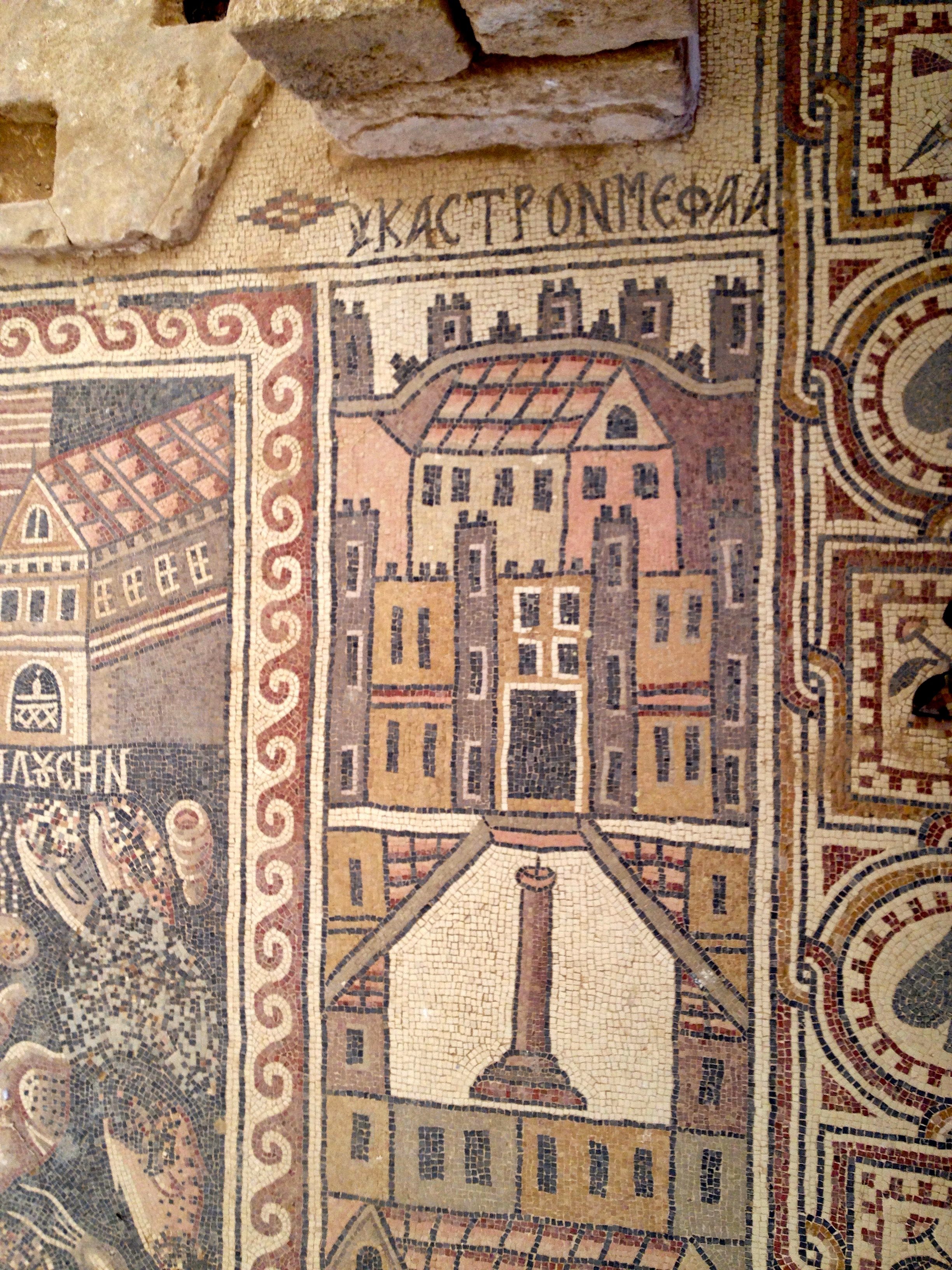
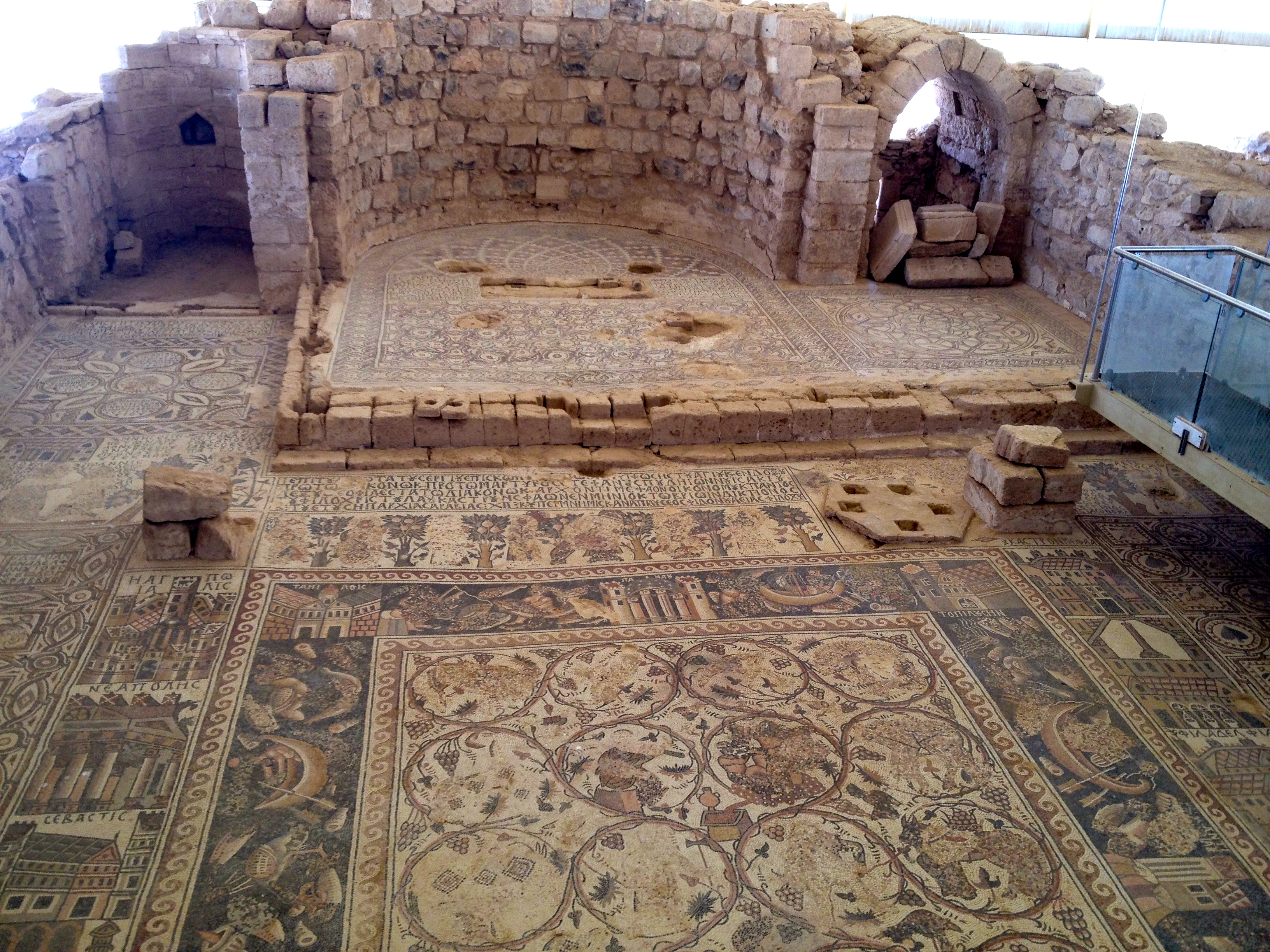
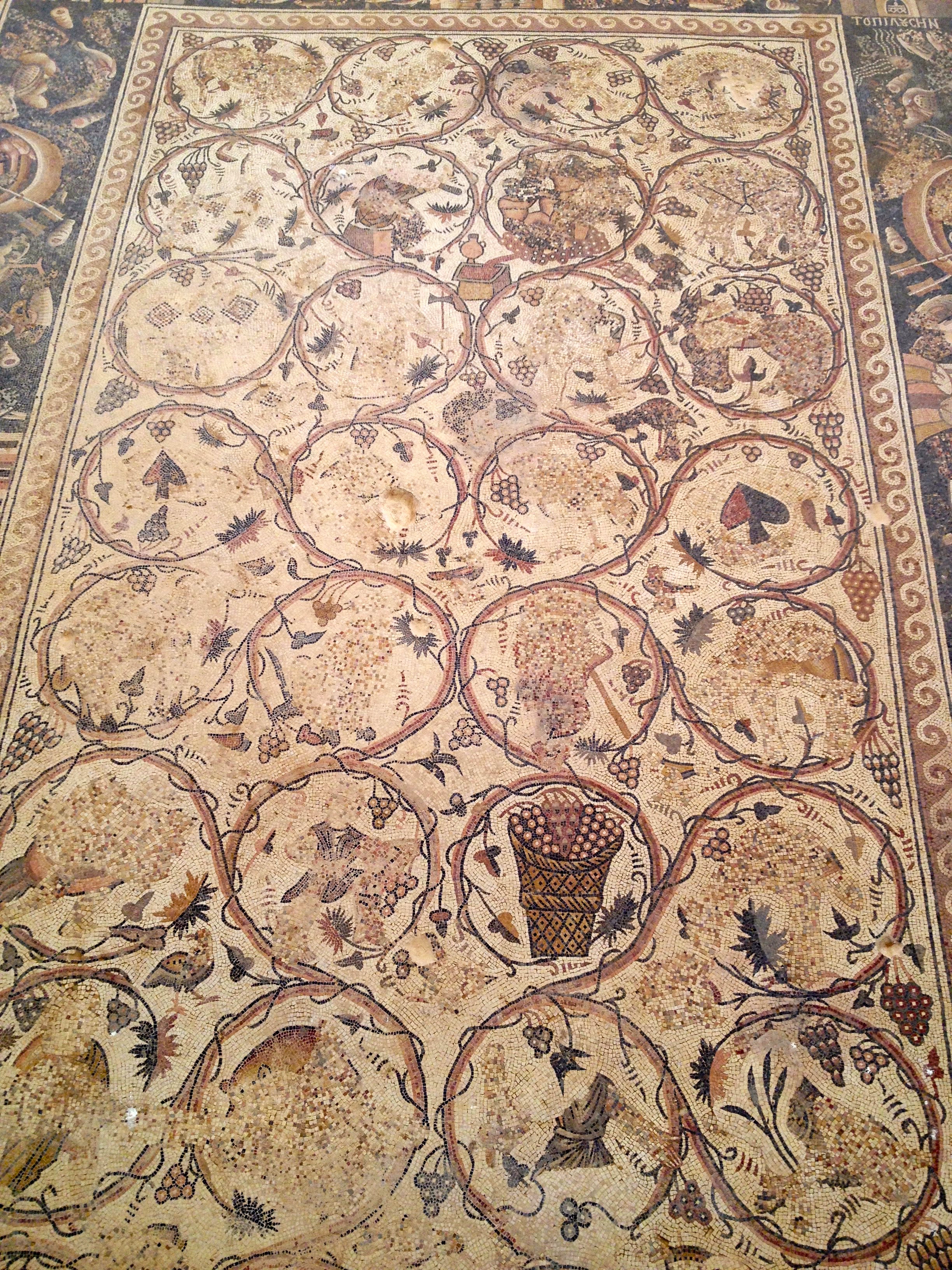
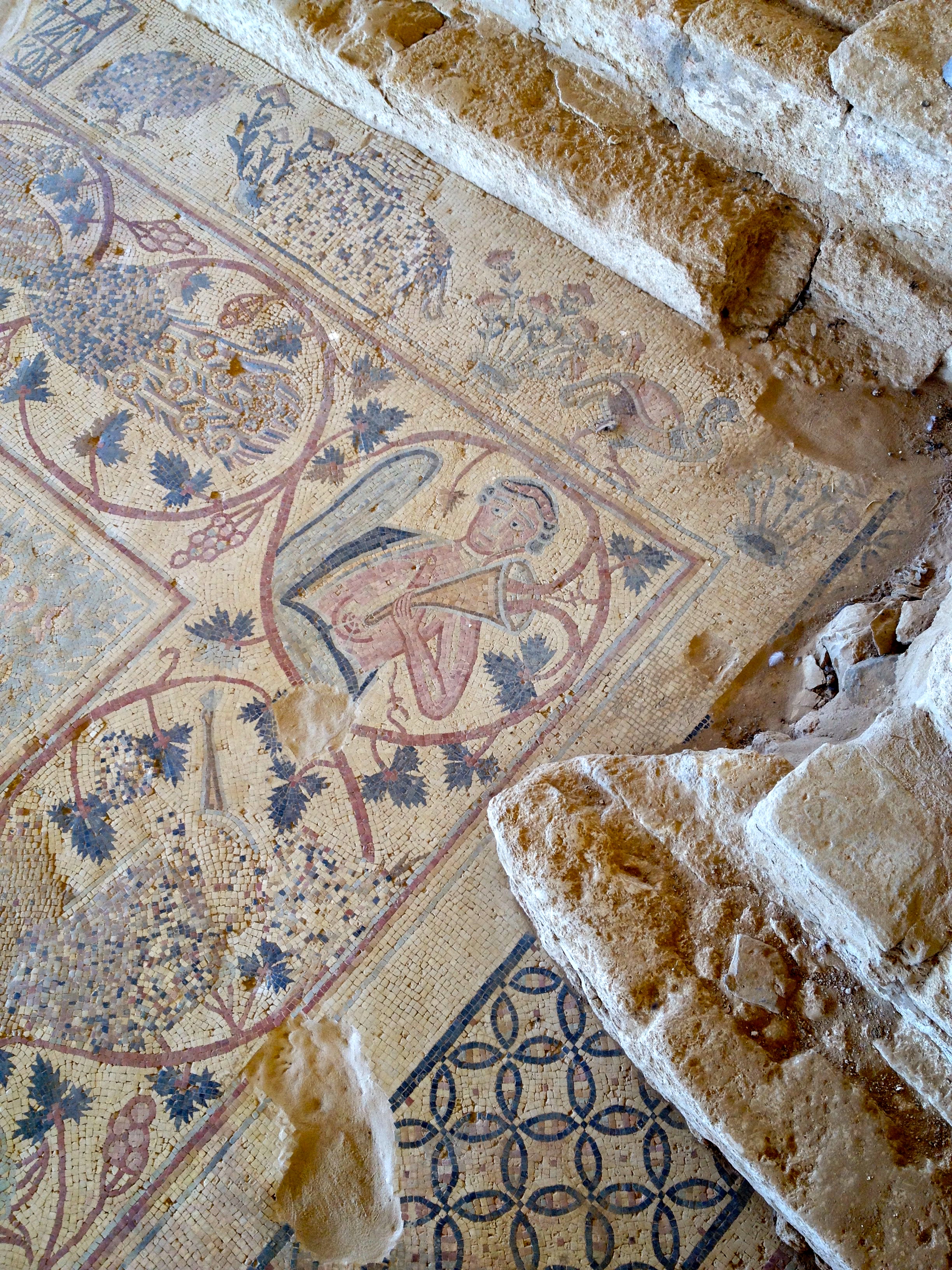
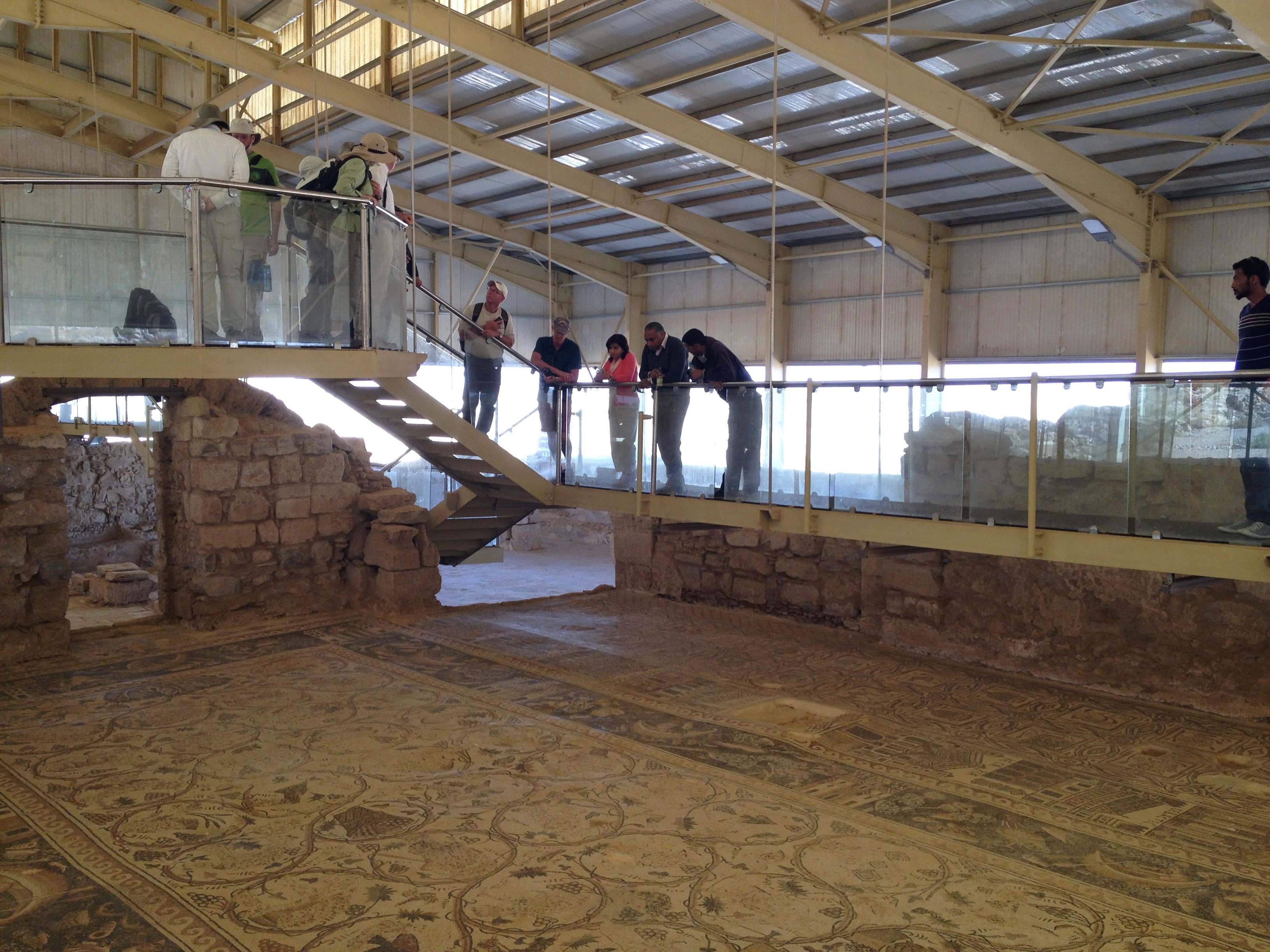
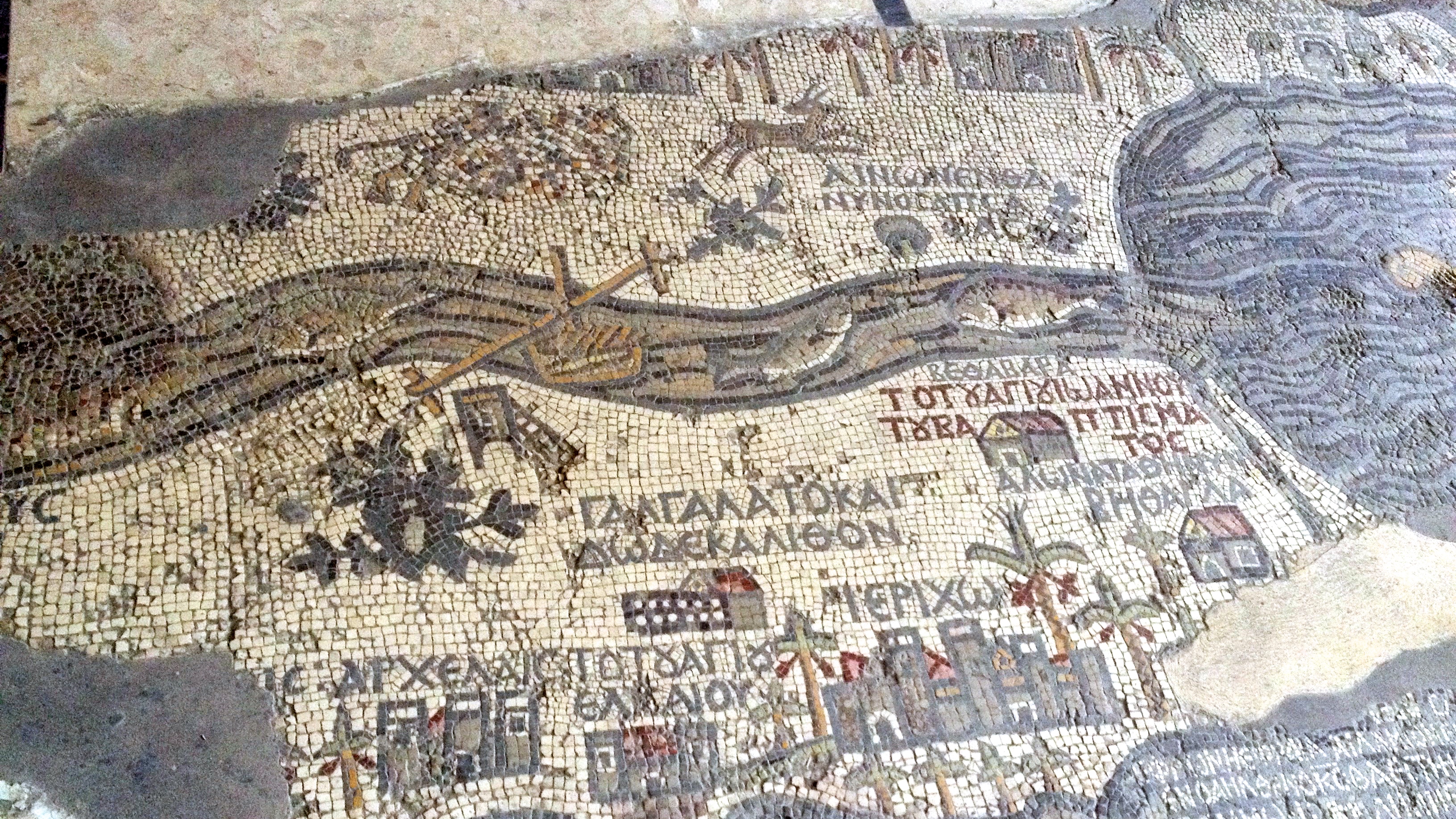
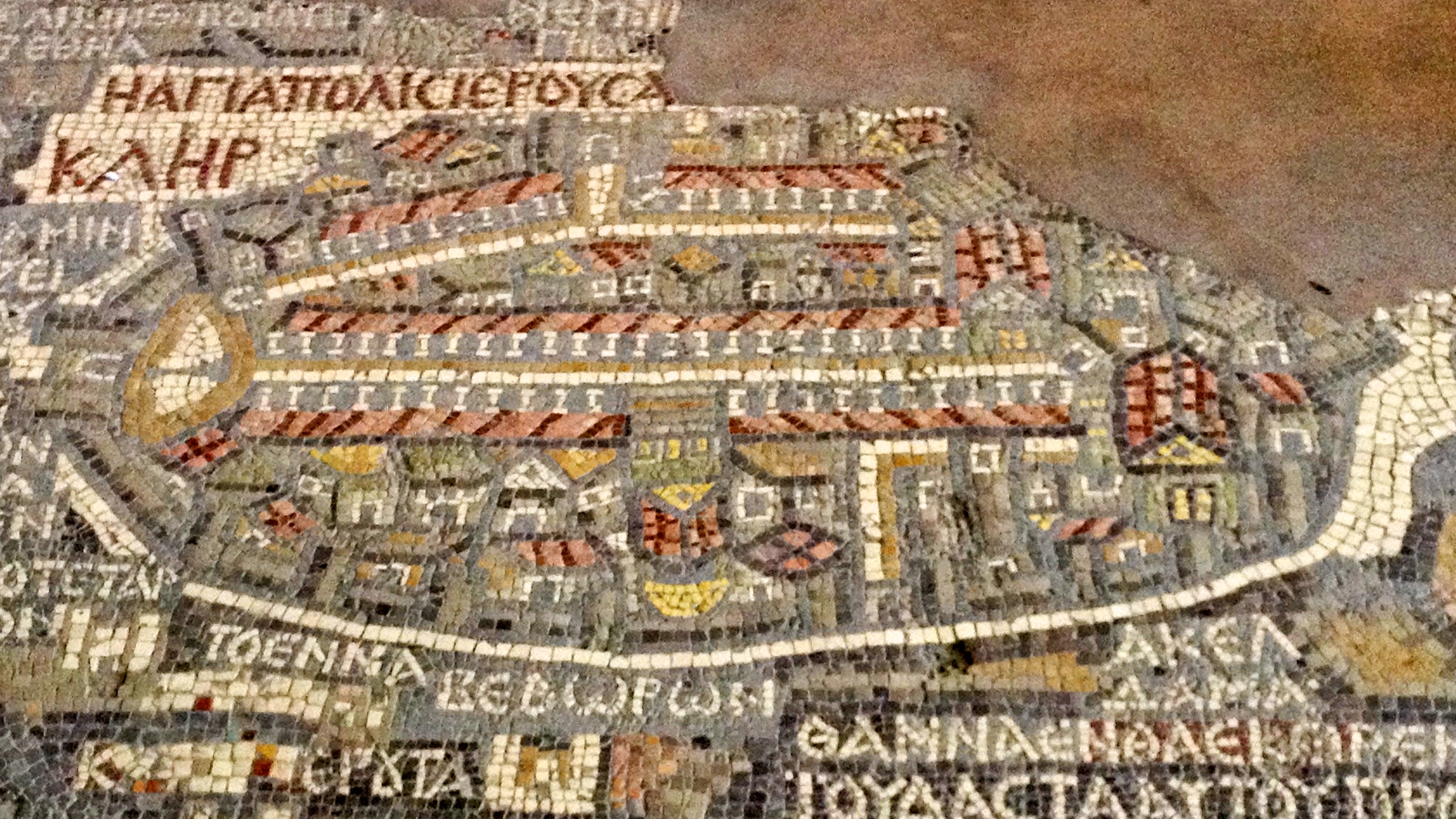
We saw two other traditional Christian / Jewish sites. One was Macaerus, one of Herod's great forts and major prisons. This is the place where Josephus tells us that John the Baptist was beheaded by Herod. The fortress is now just a ruin.
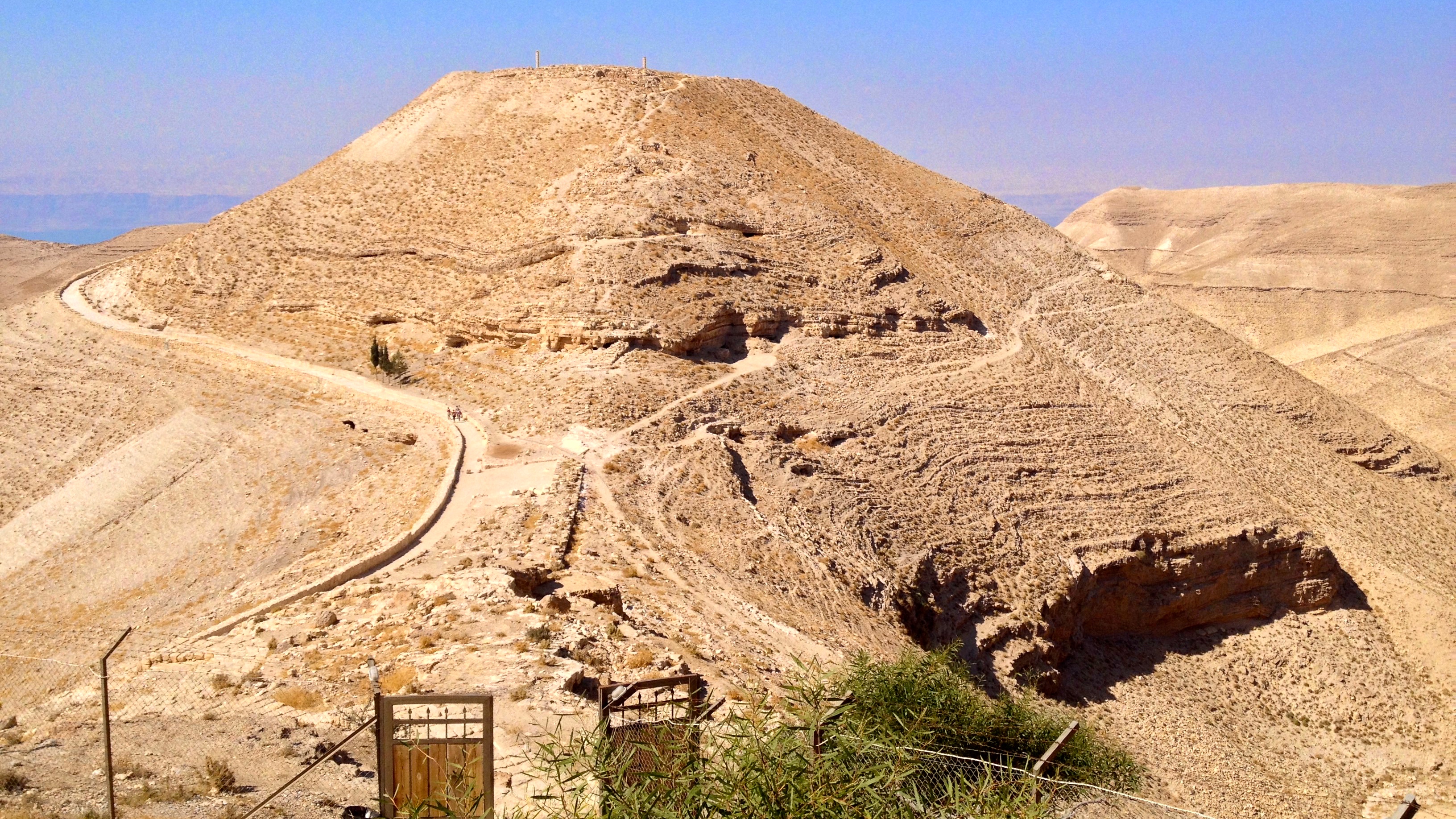
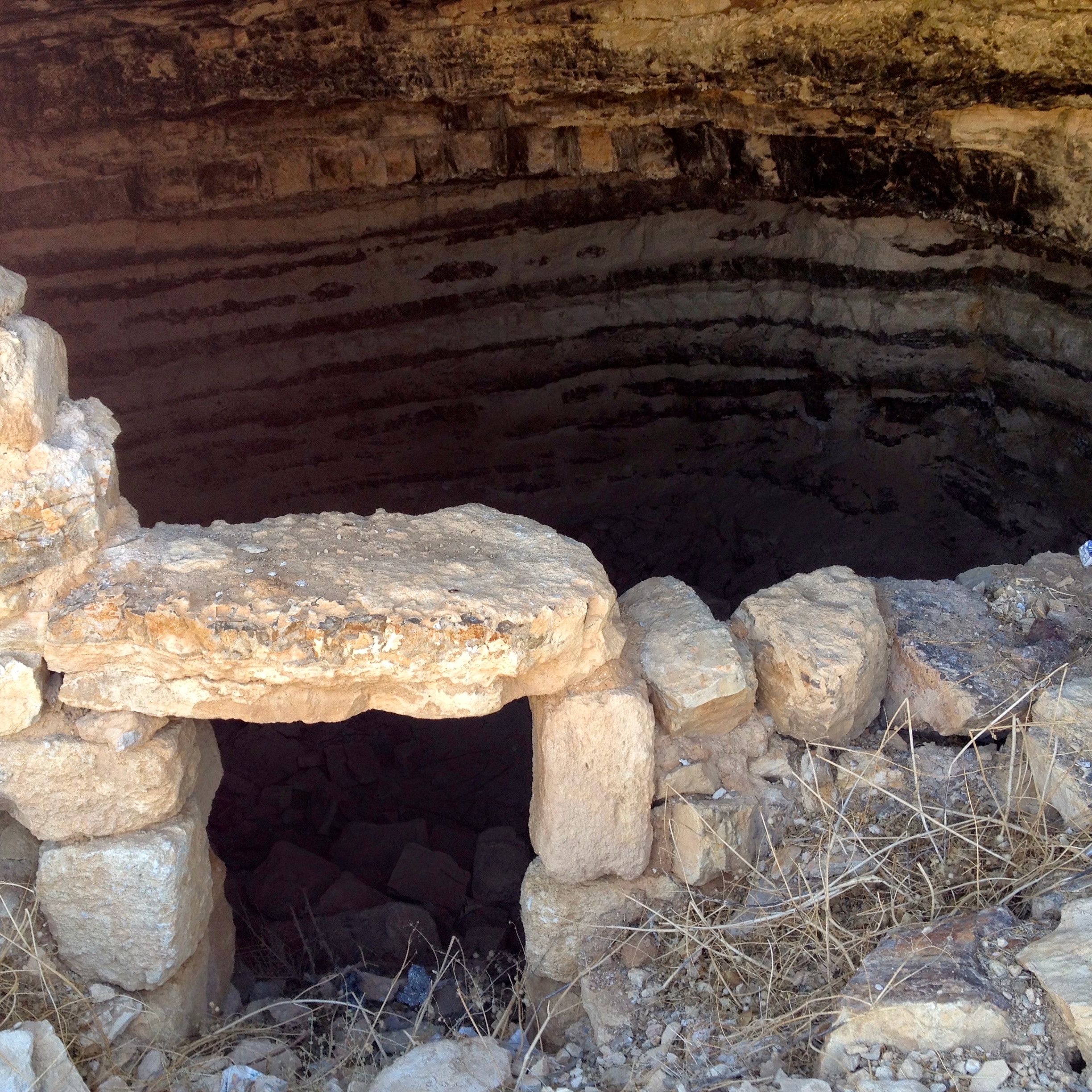
Mt. Nebo is the place the Bible tells us that Moses laid eyes on the Promised Land before he died, and that he was buried in an unmarked place nearby. There is an active Roman Catholic monastery still active on its peak.
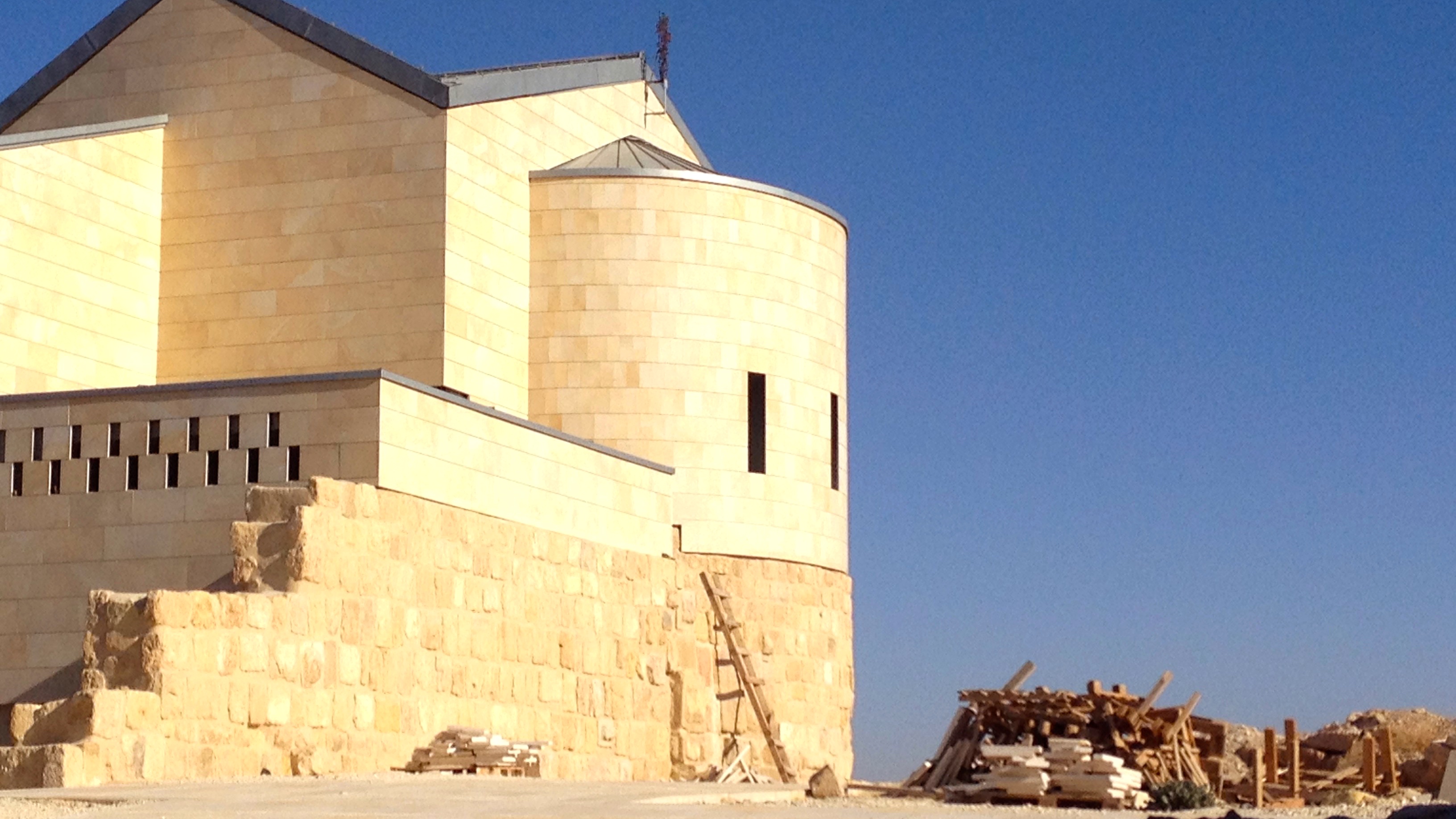
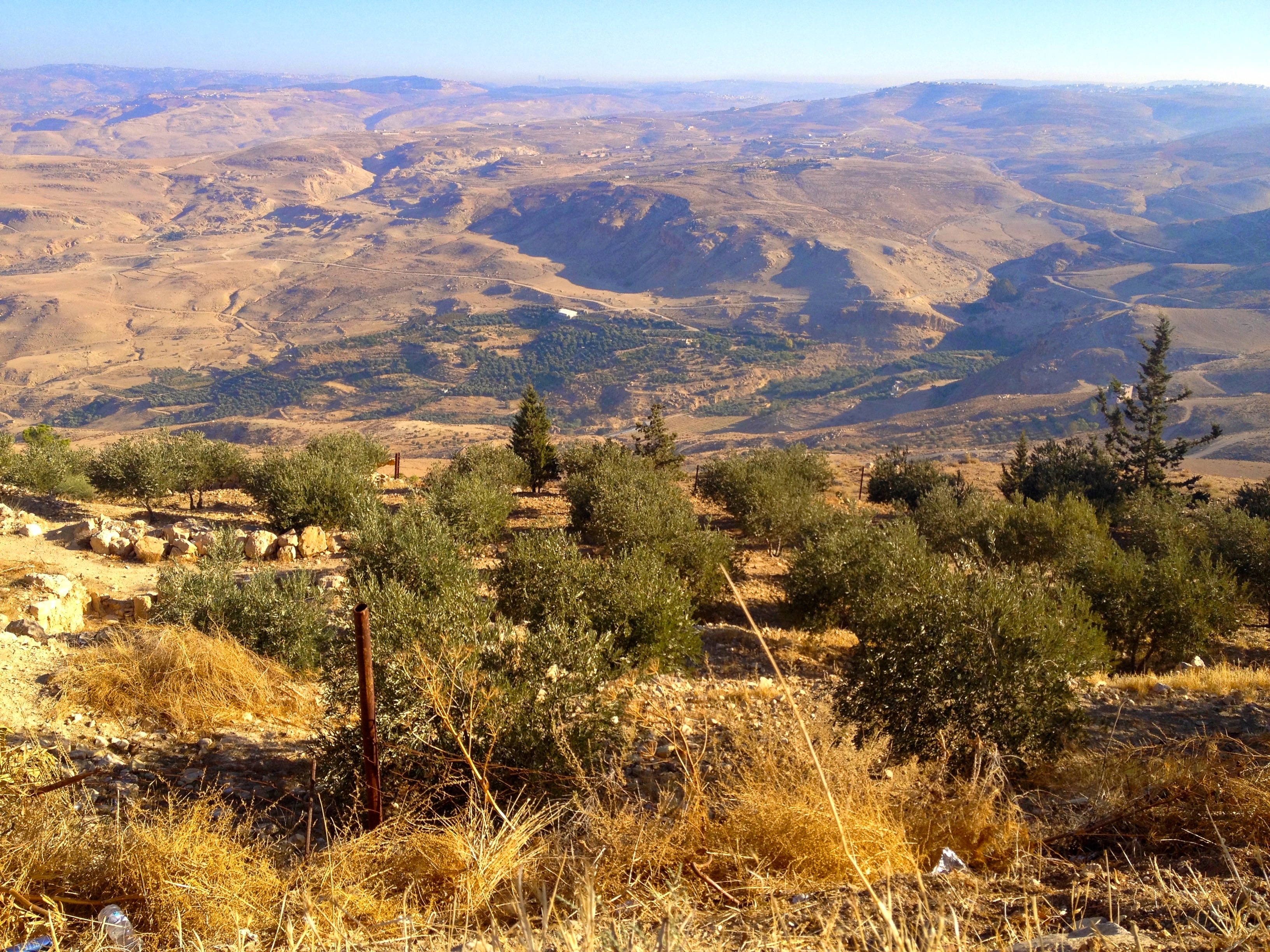
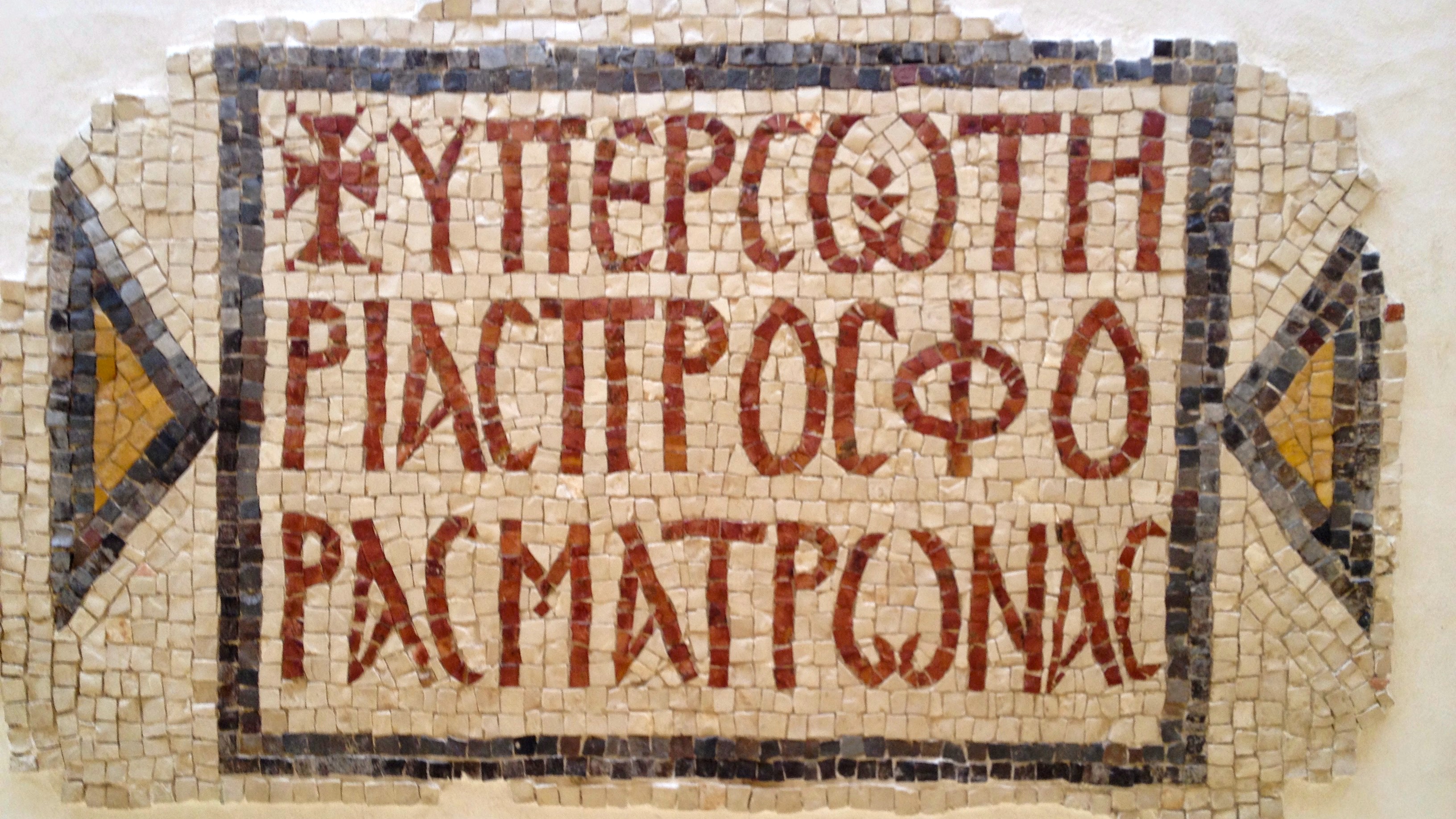
There was also a friendly stray dog at Mt. Nebo, who wandered around, sweetly hoping for a pat or a snack.
Don't worry, I didn't touch him.
Then we crossed the border back into Israel at Jericho. It took us three hours. They take their borders seriously, which is understandable.
